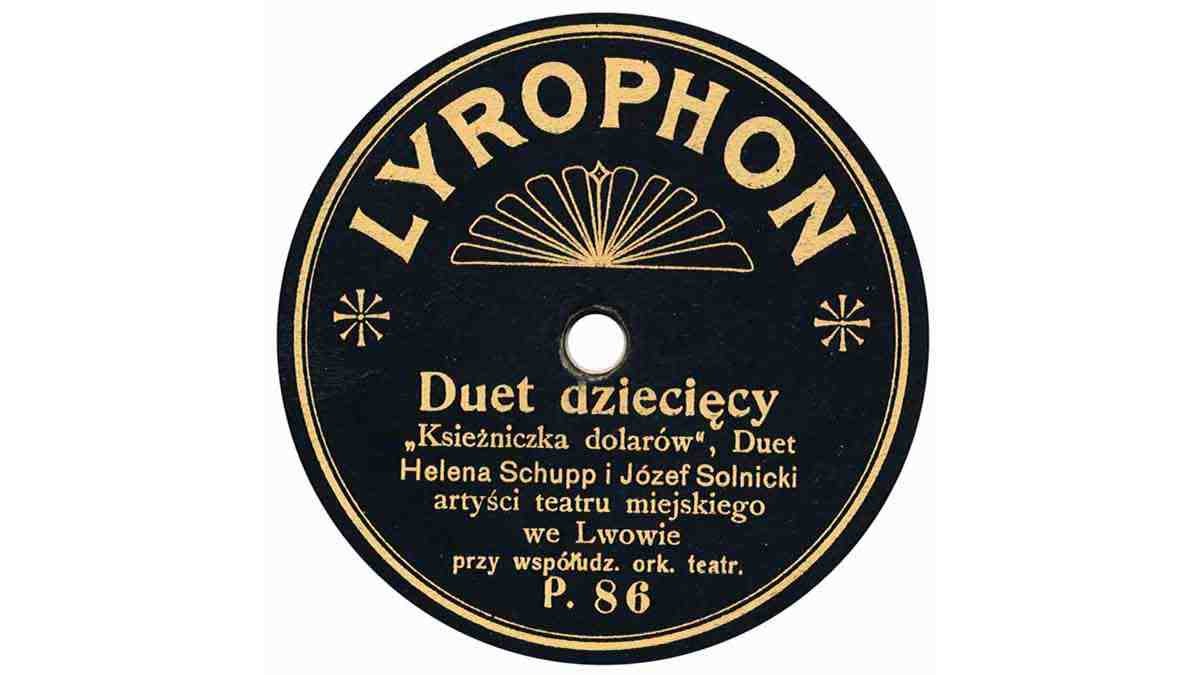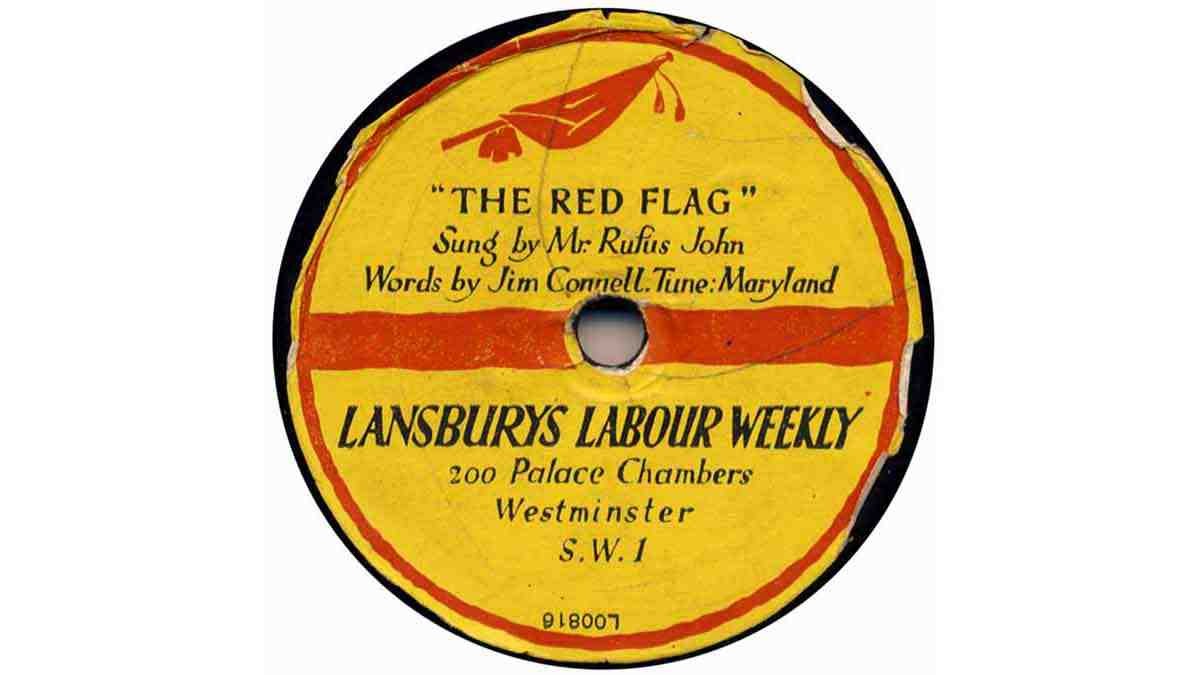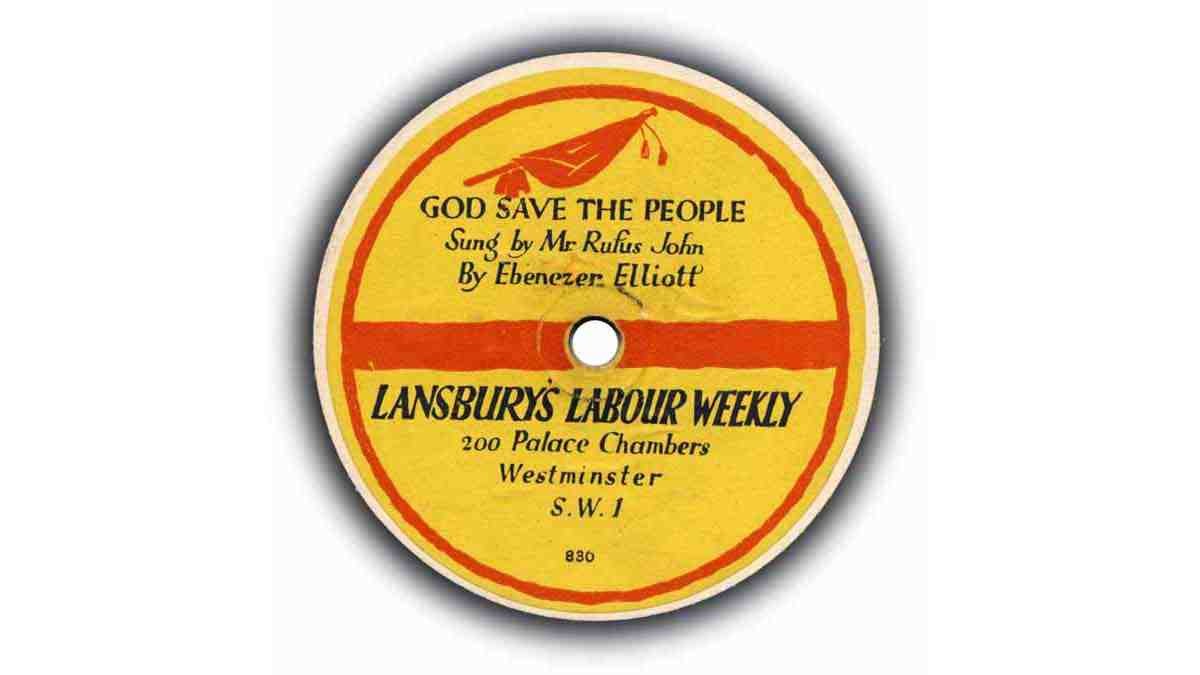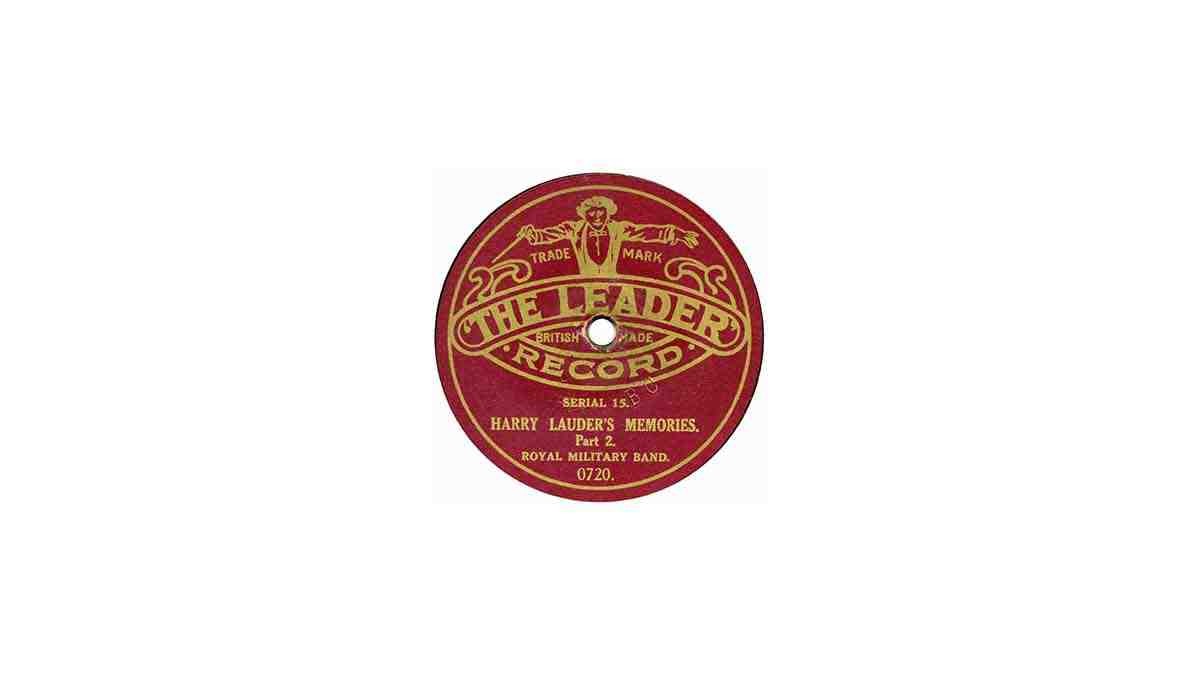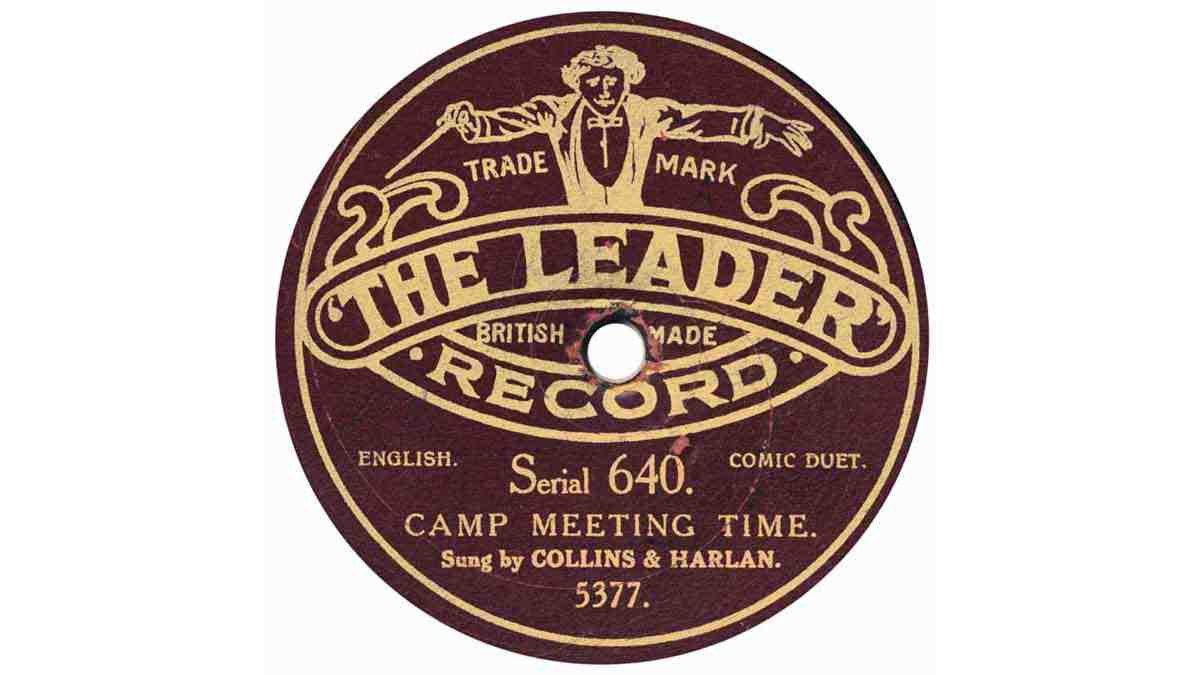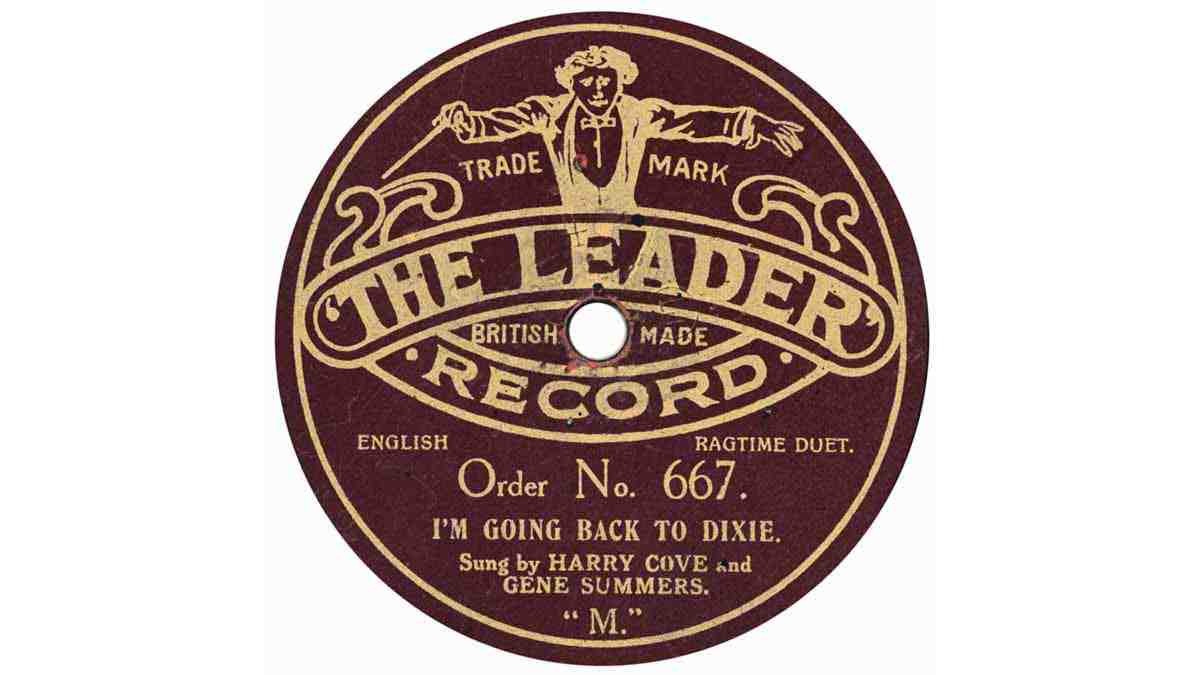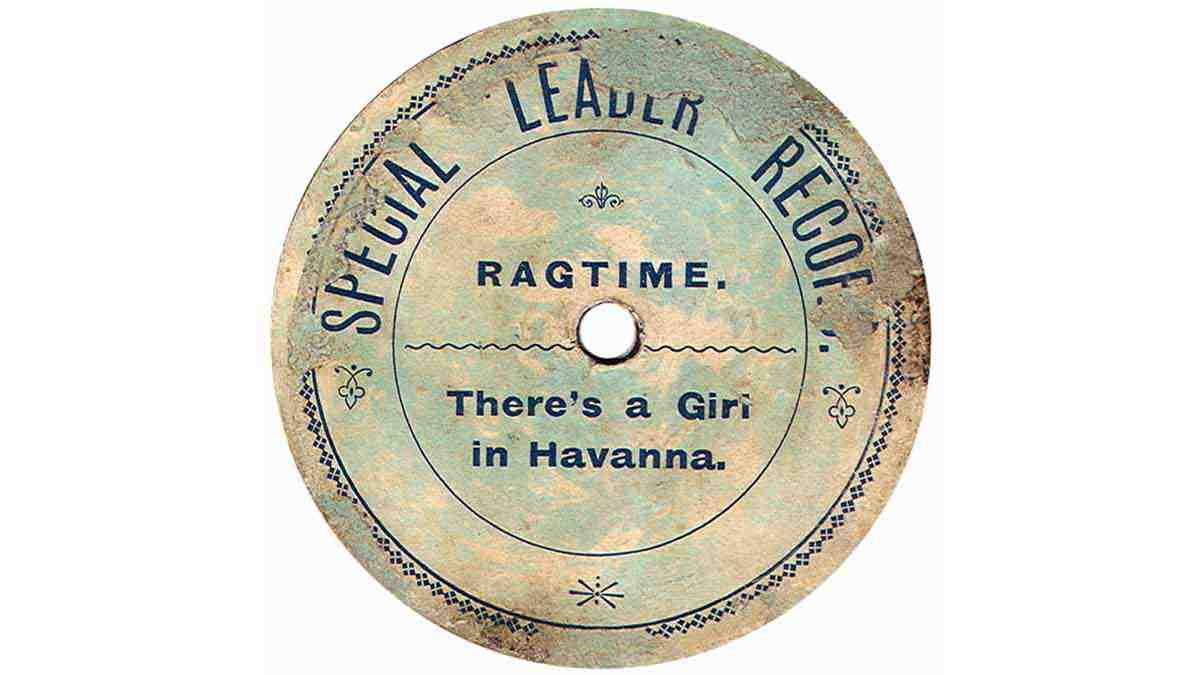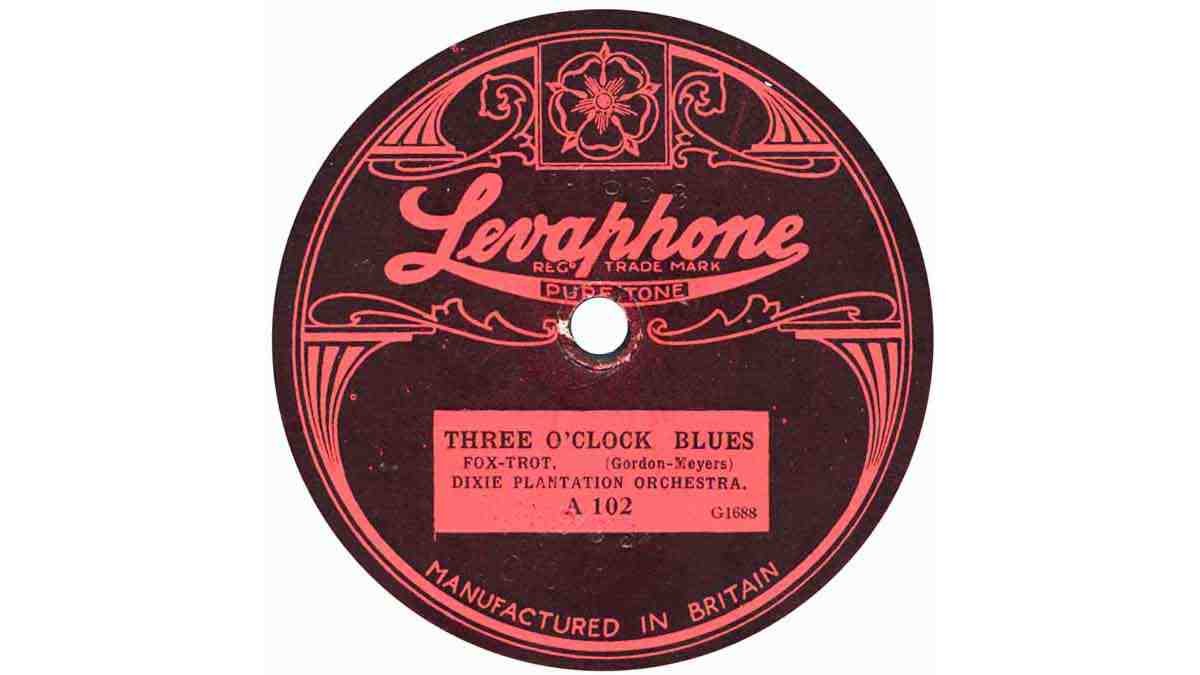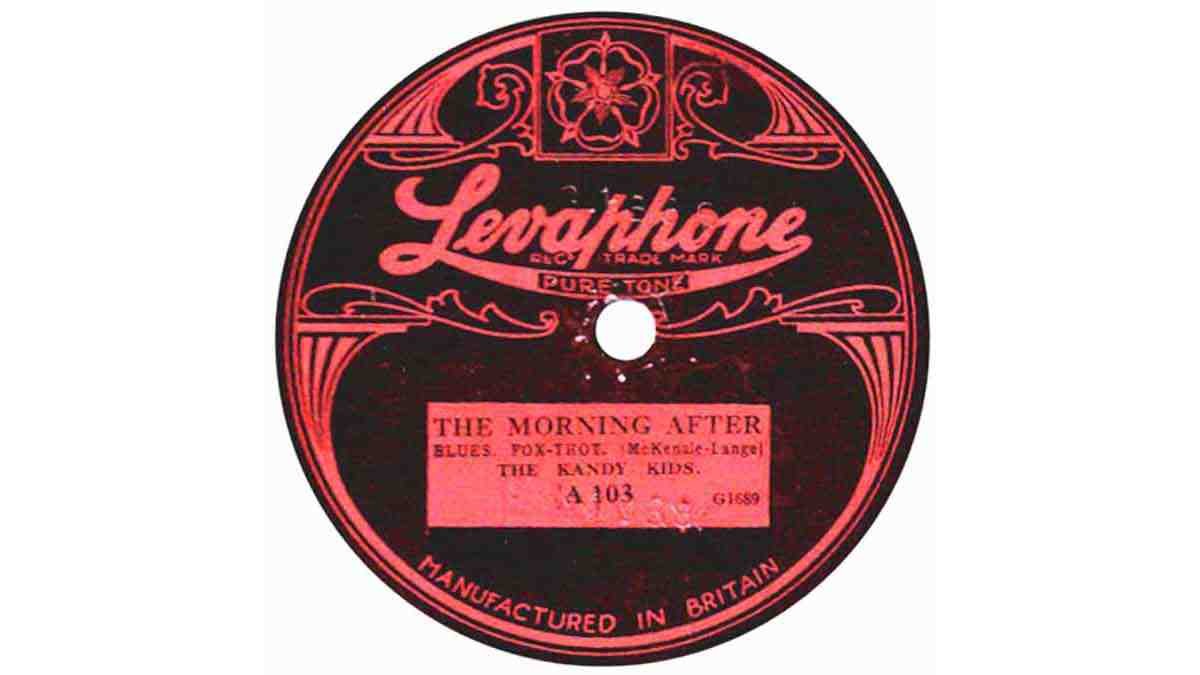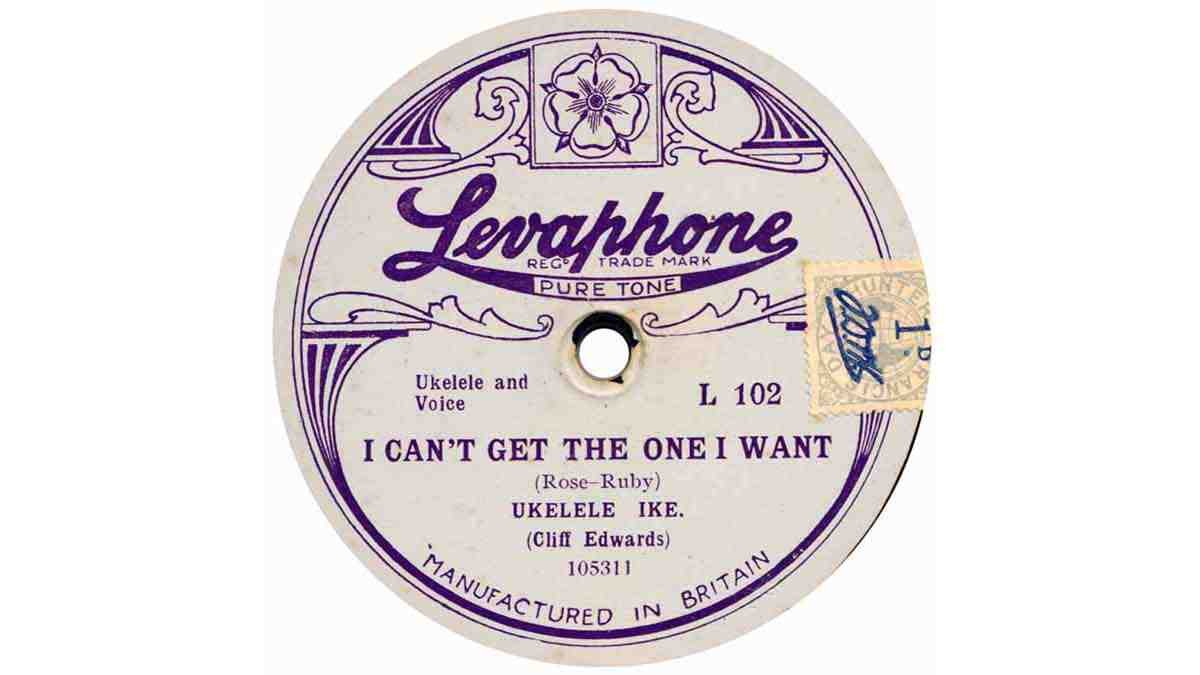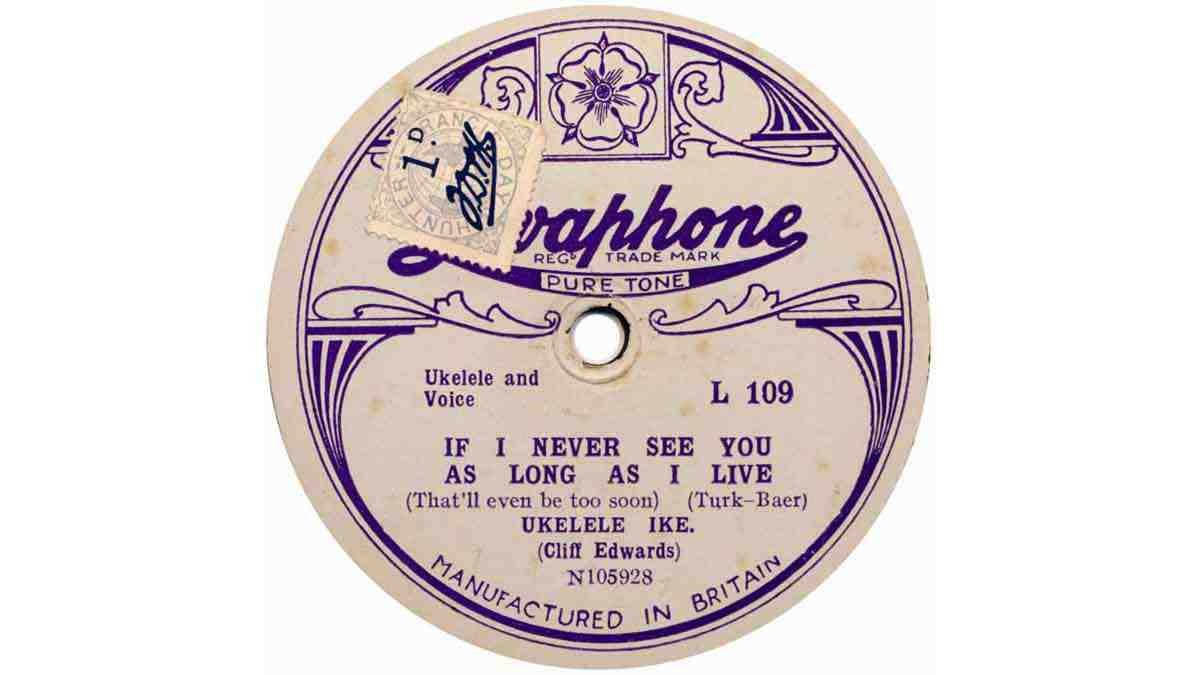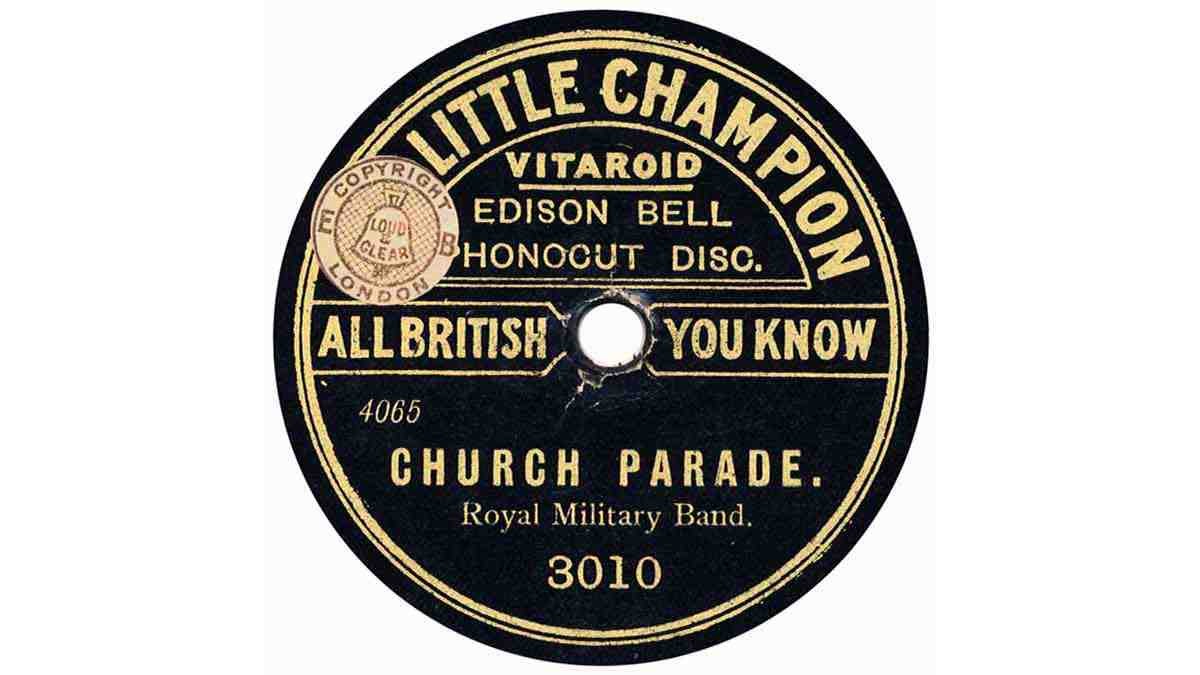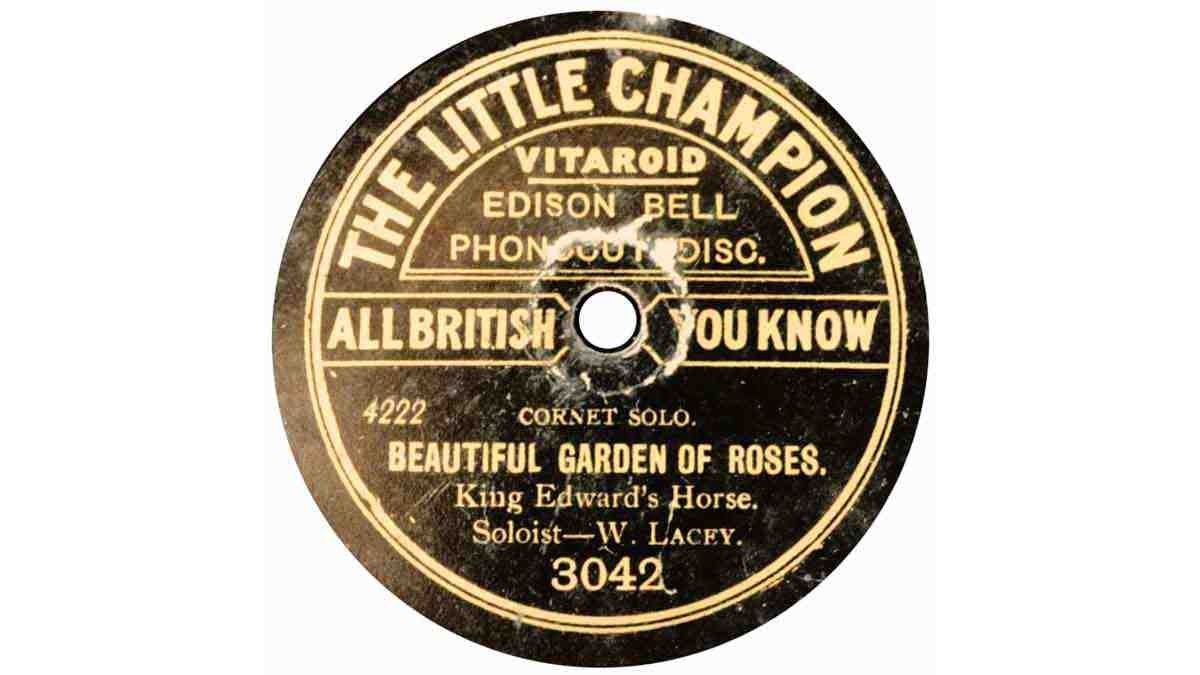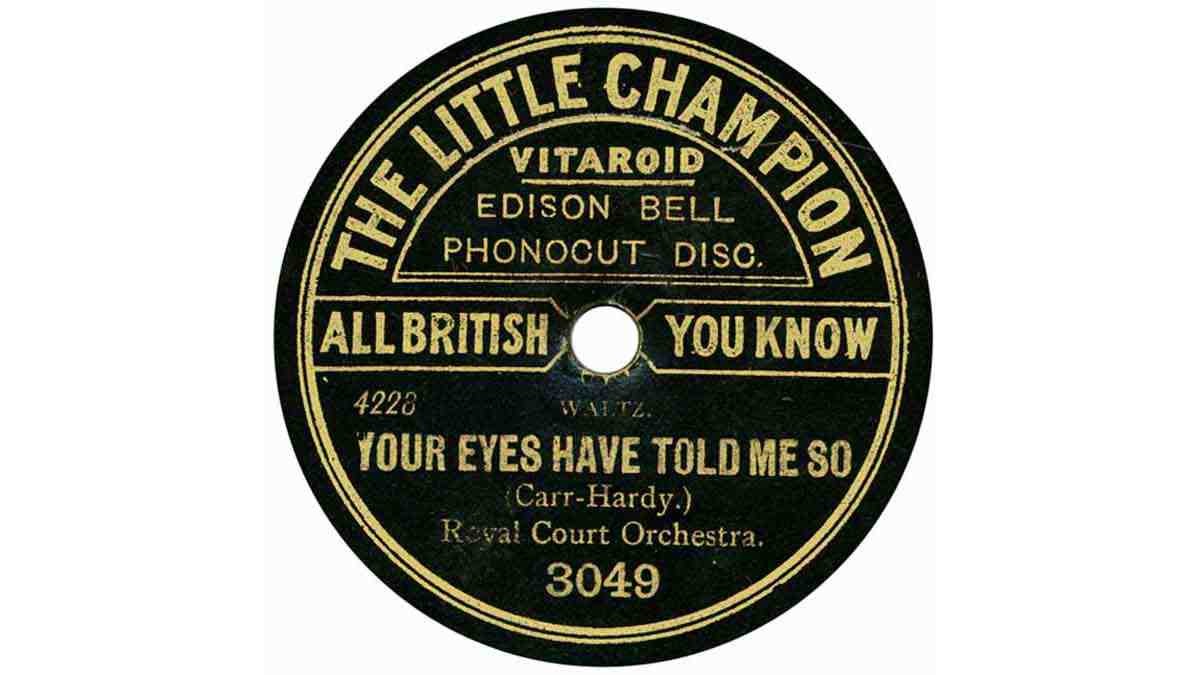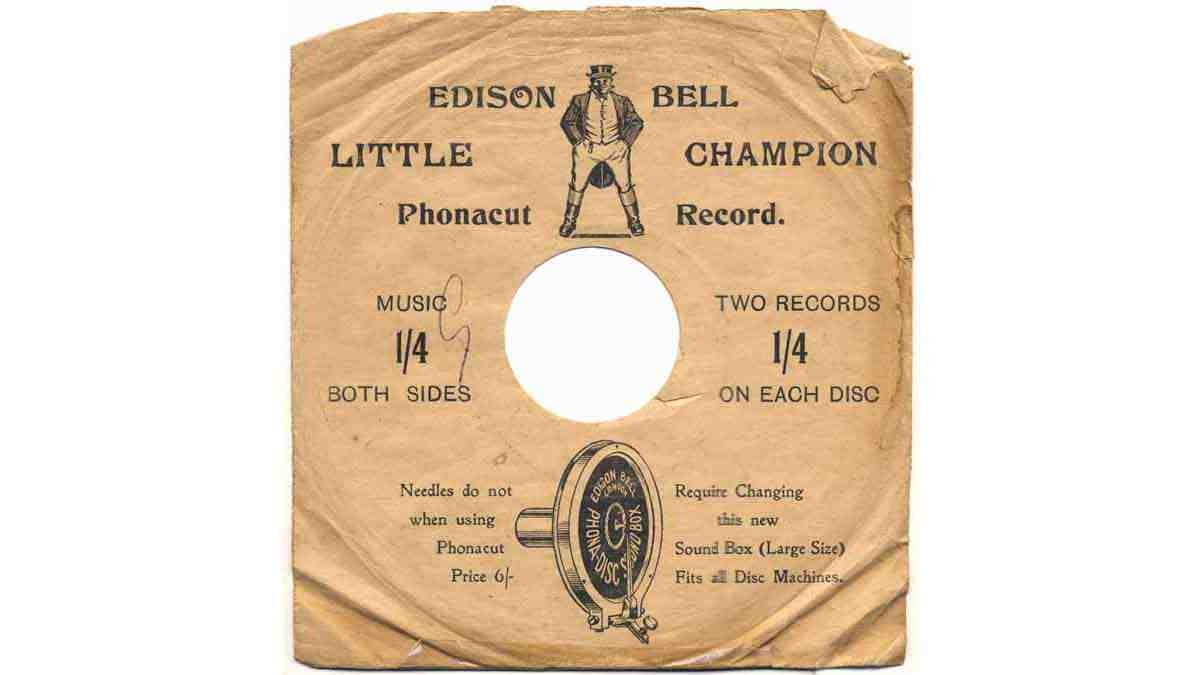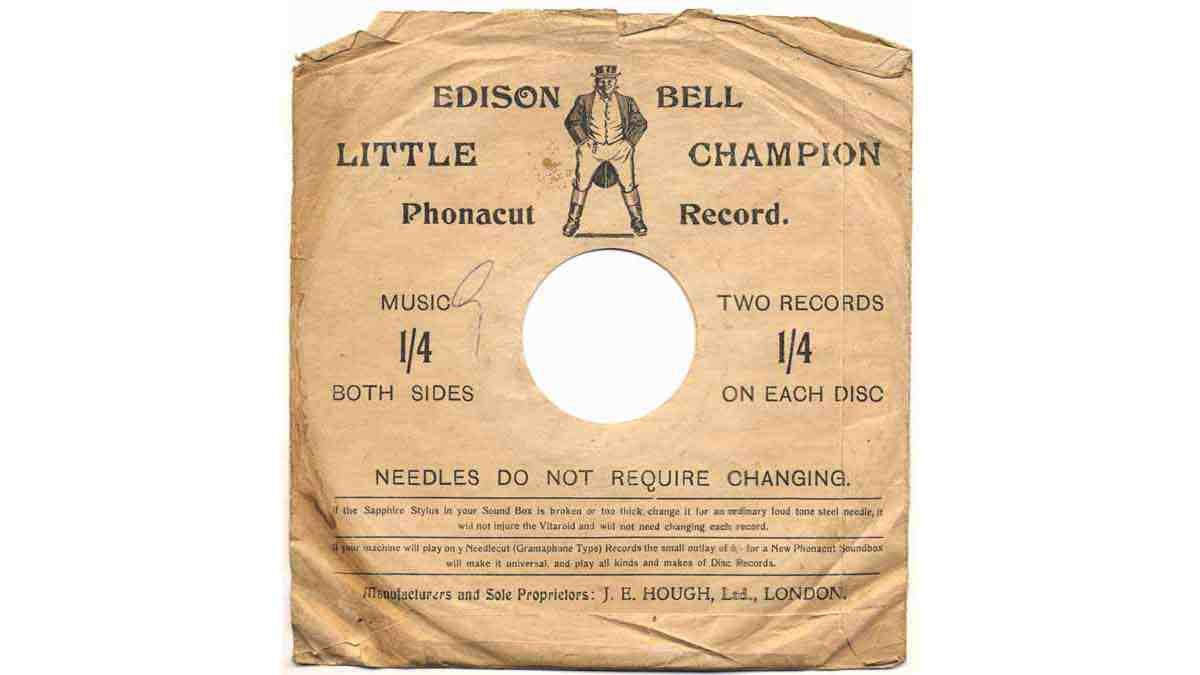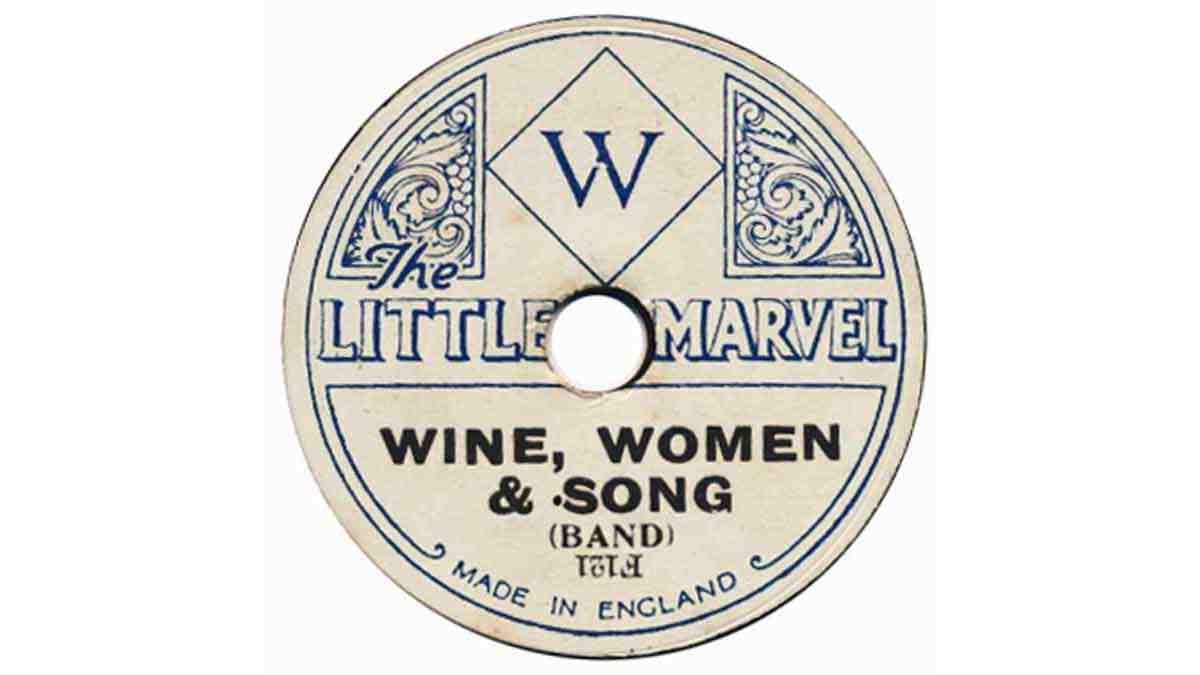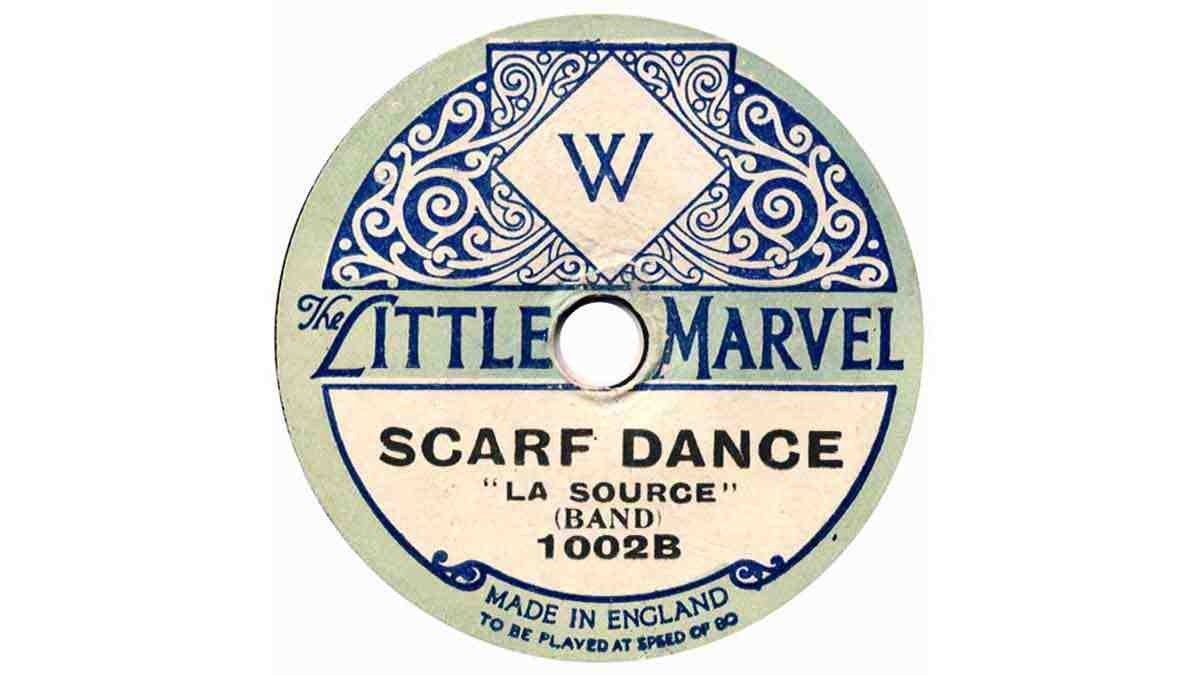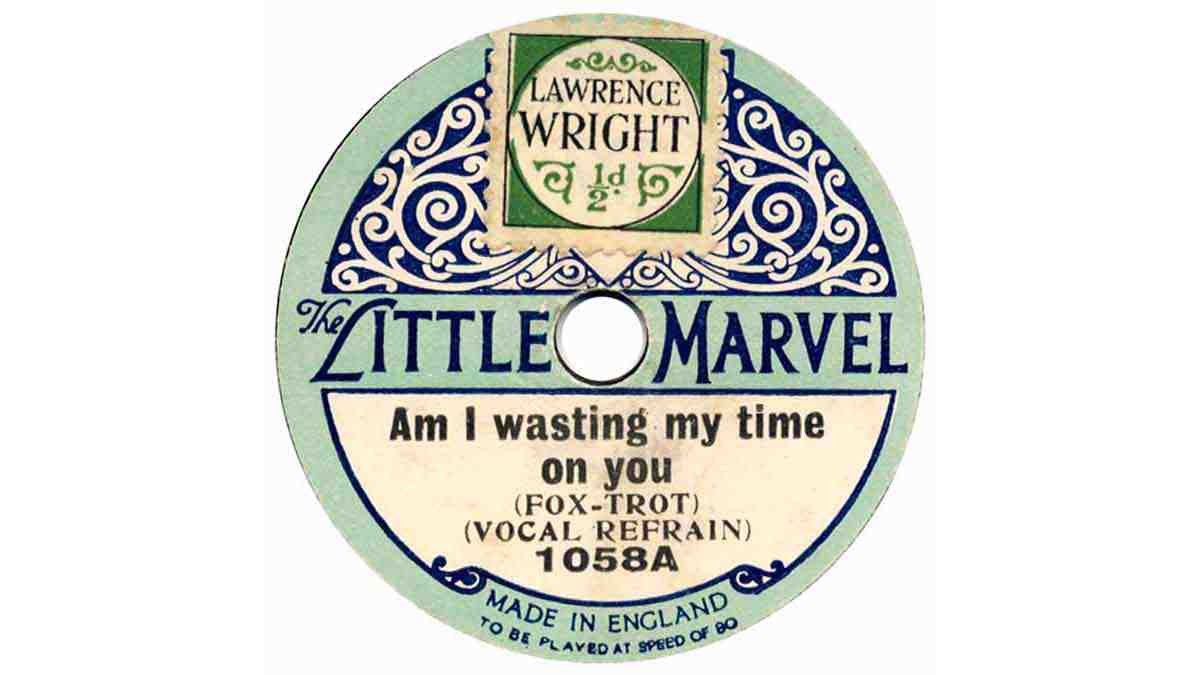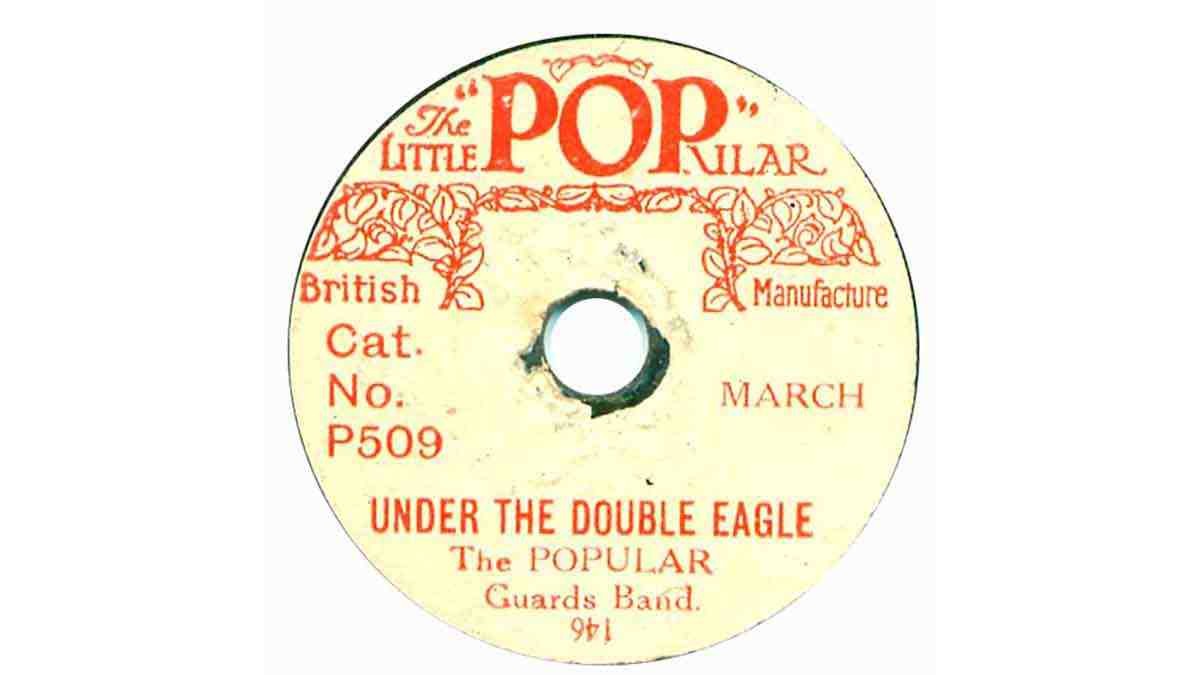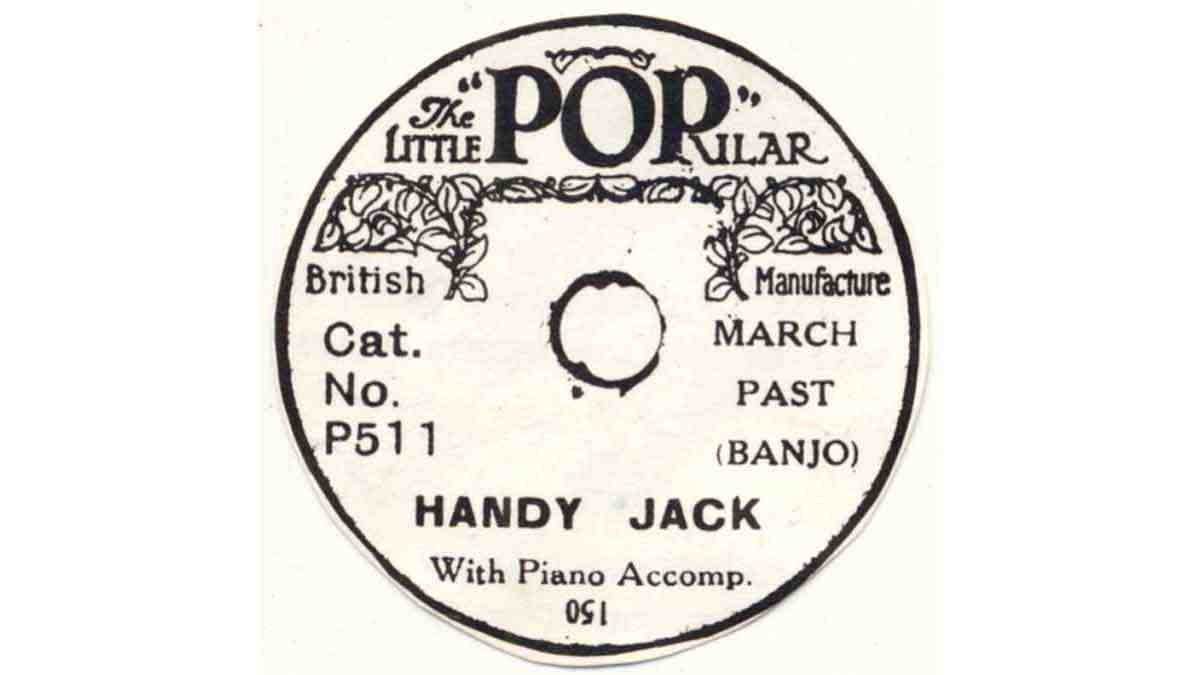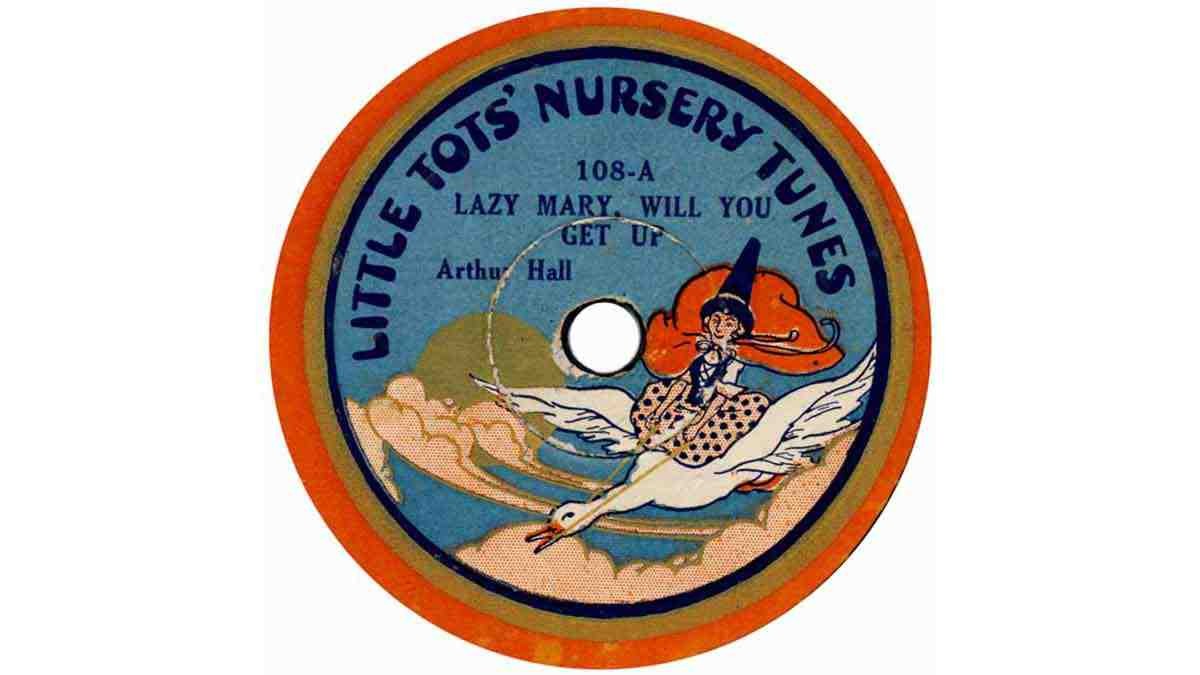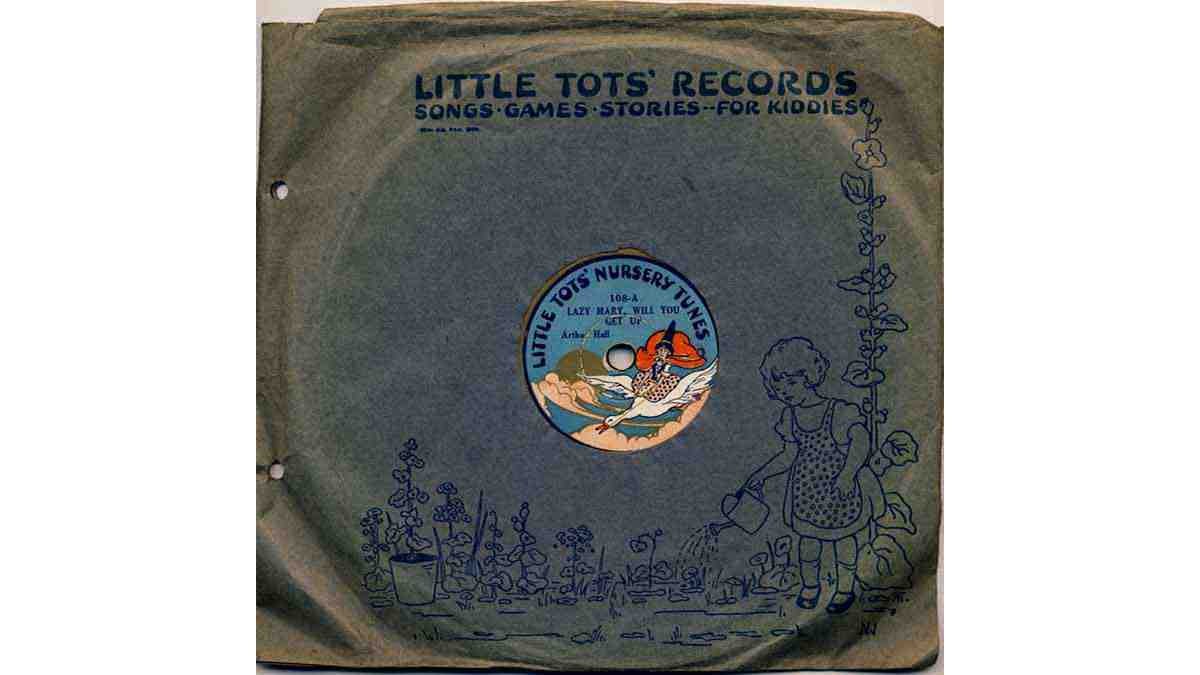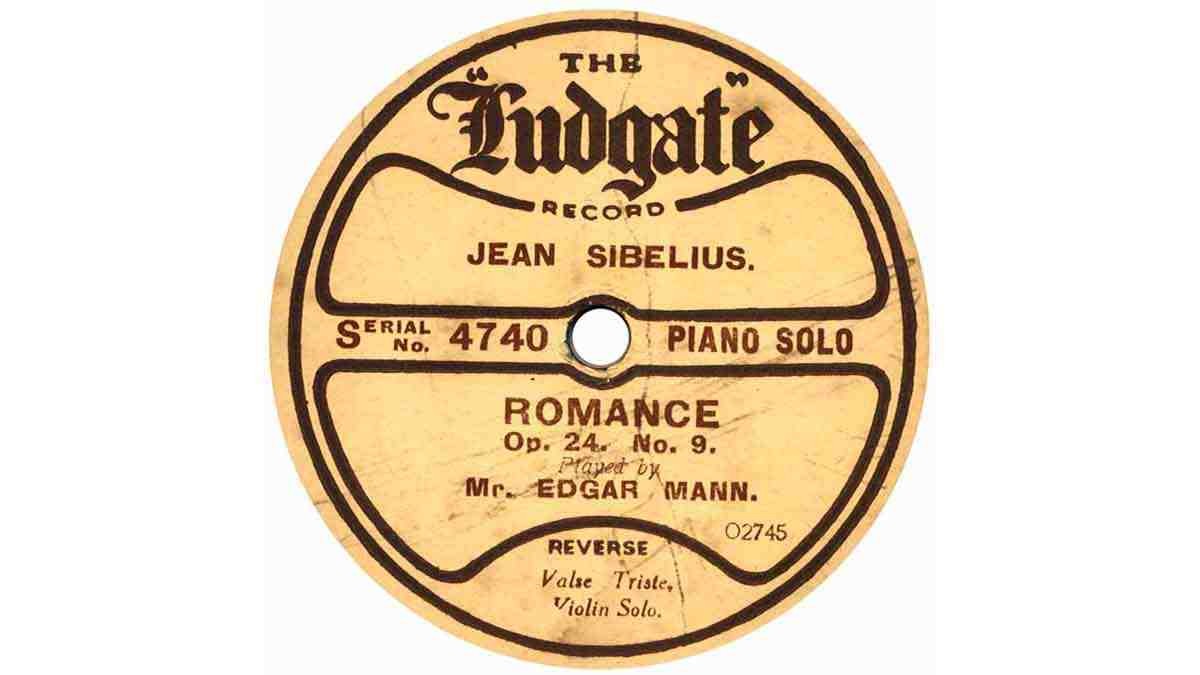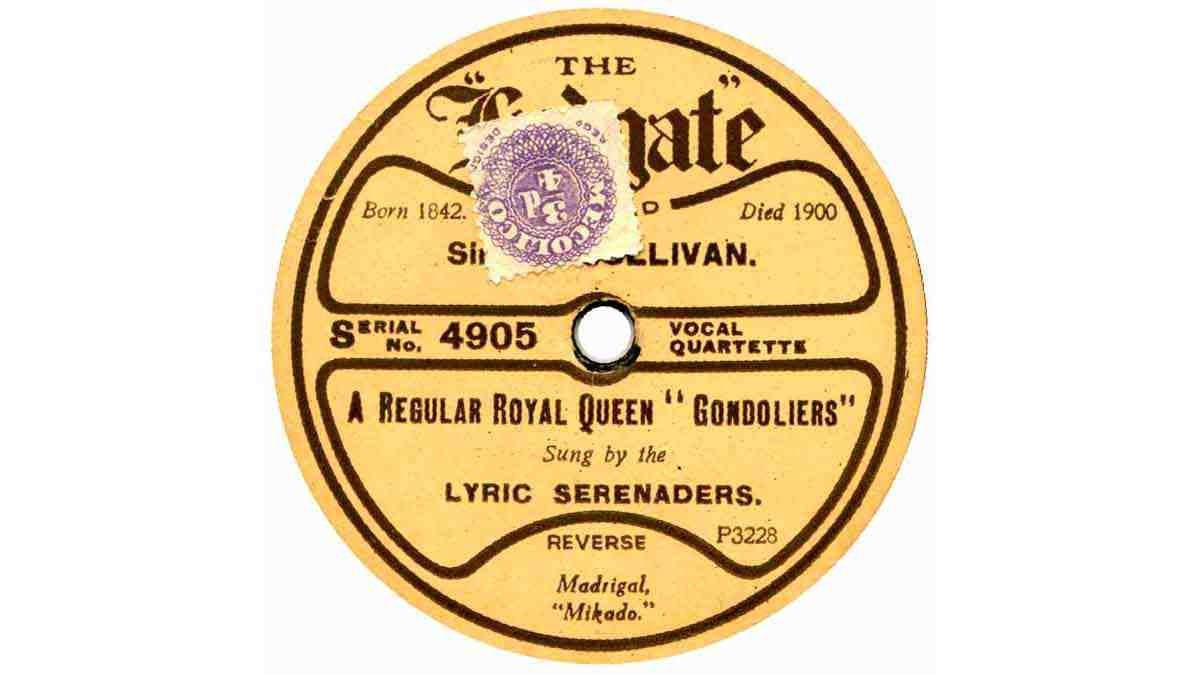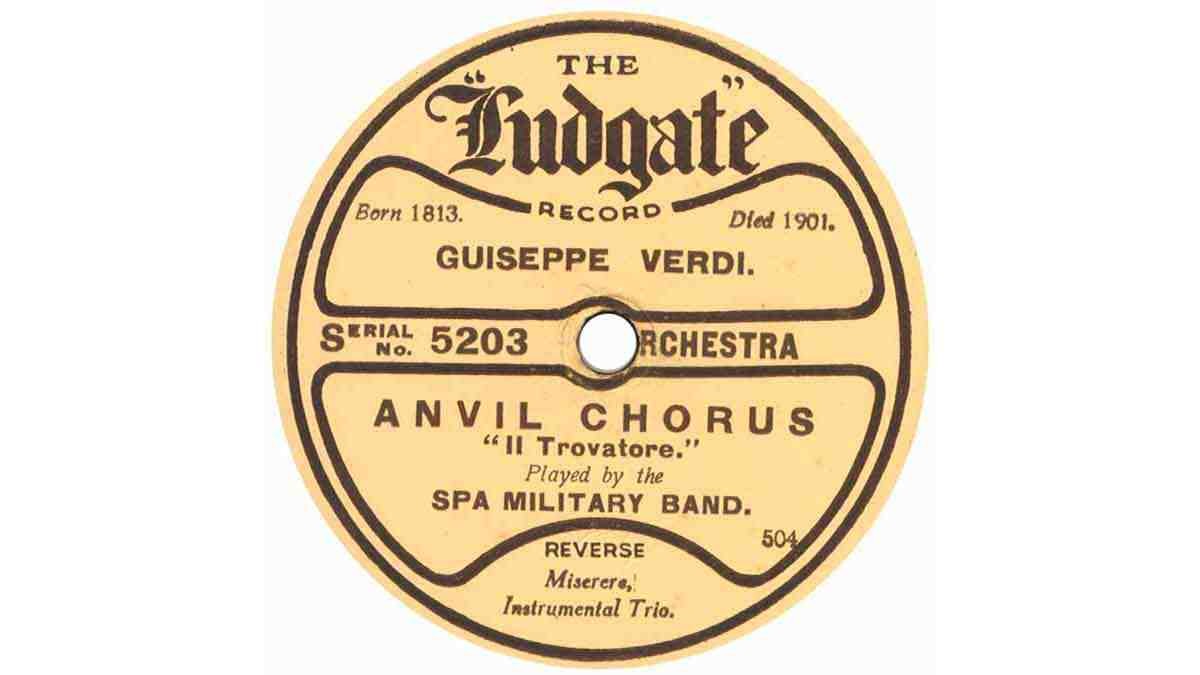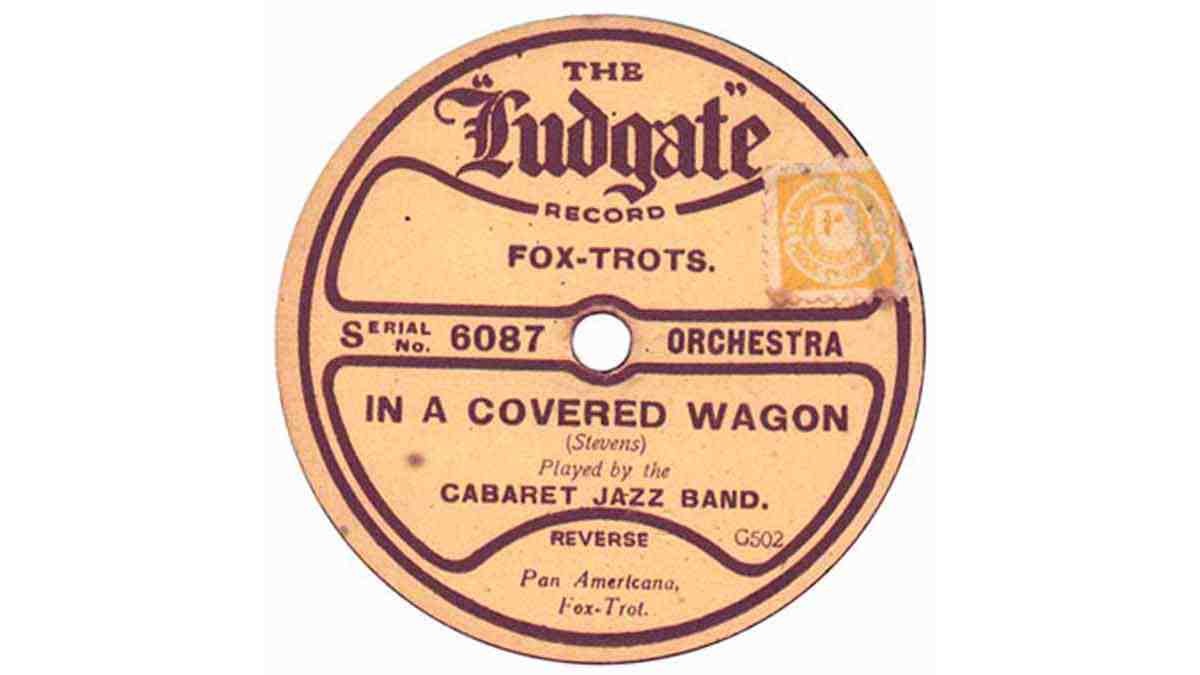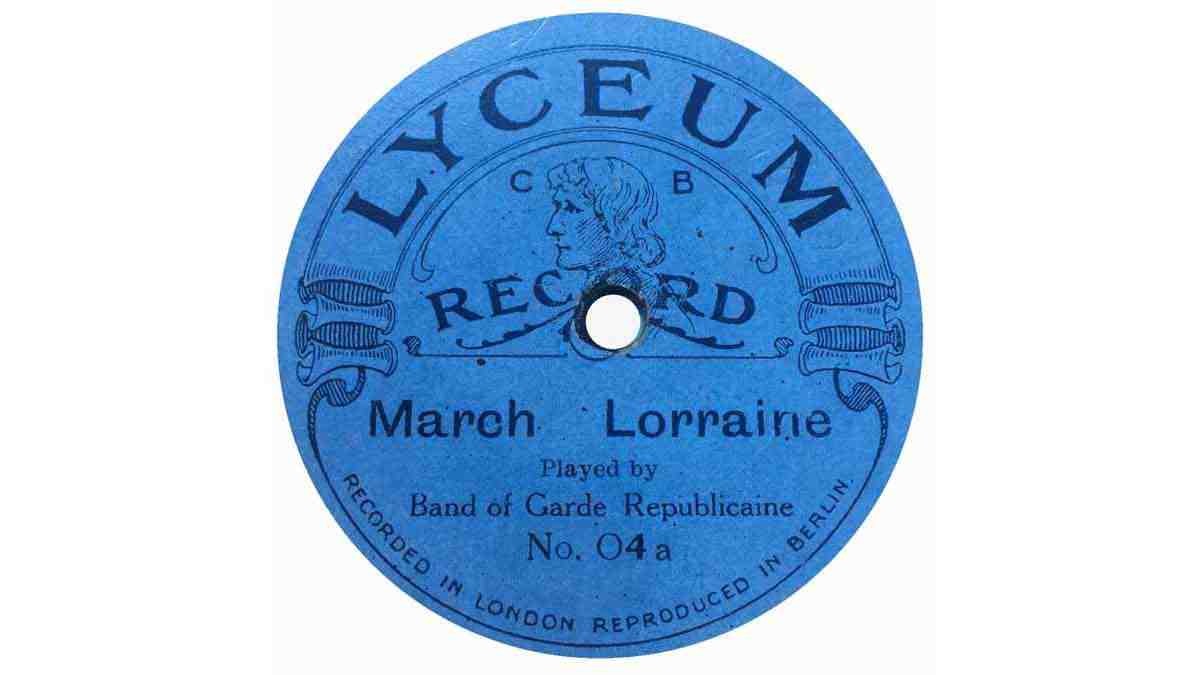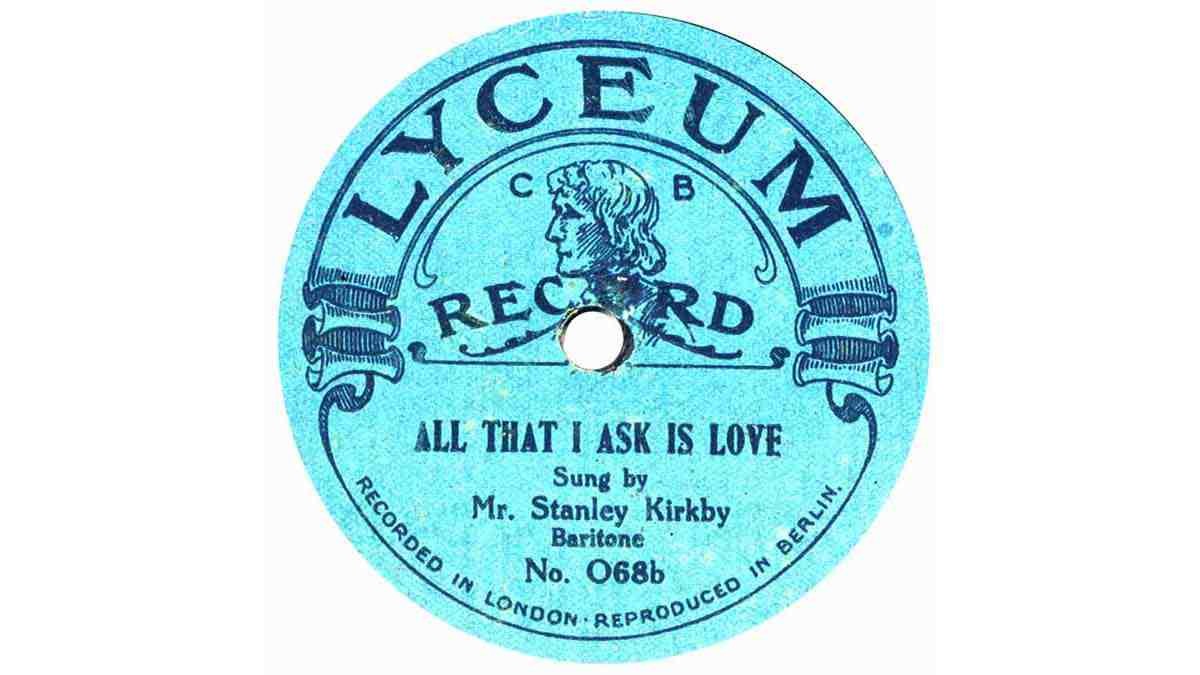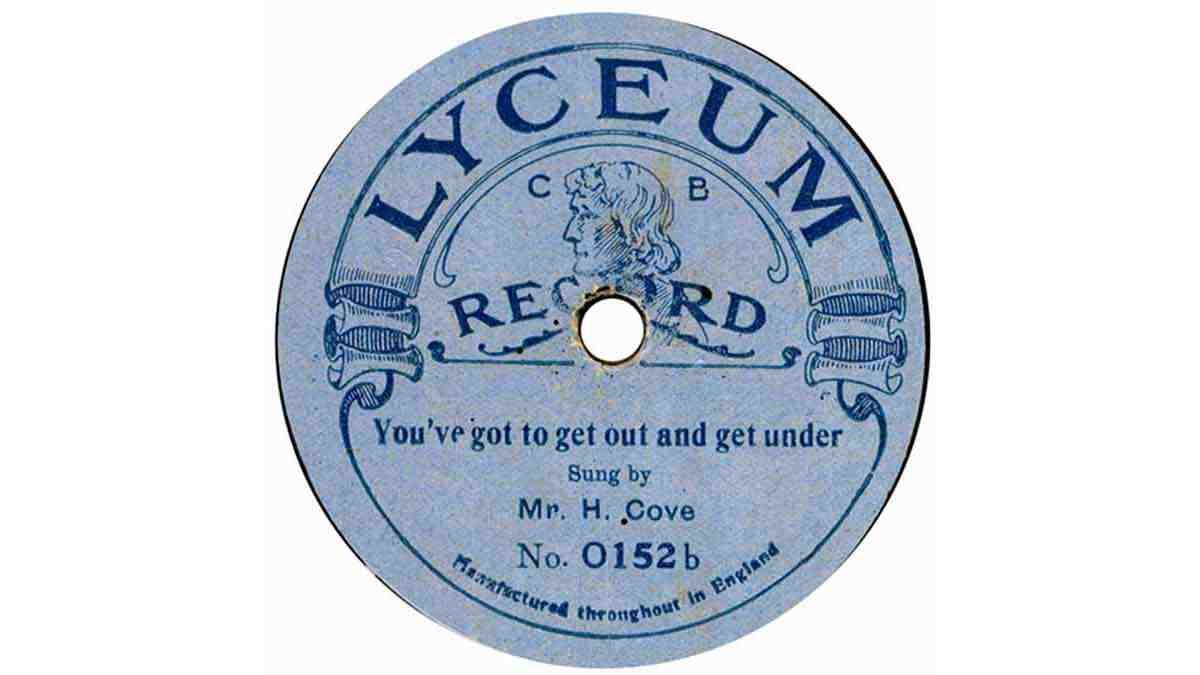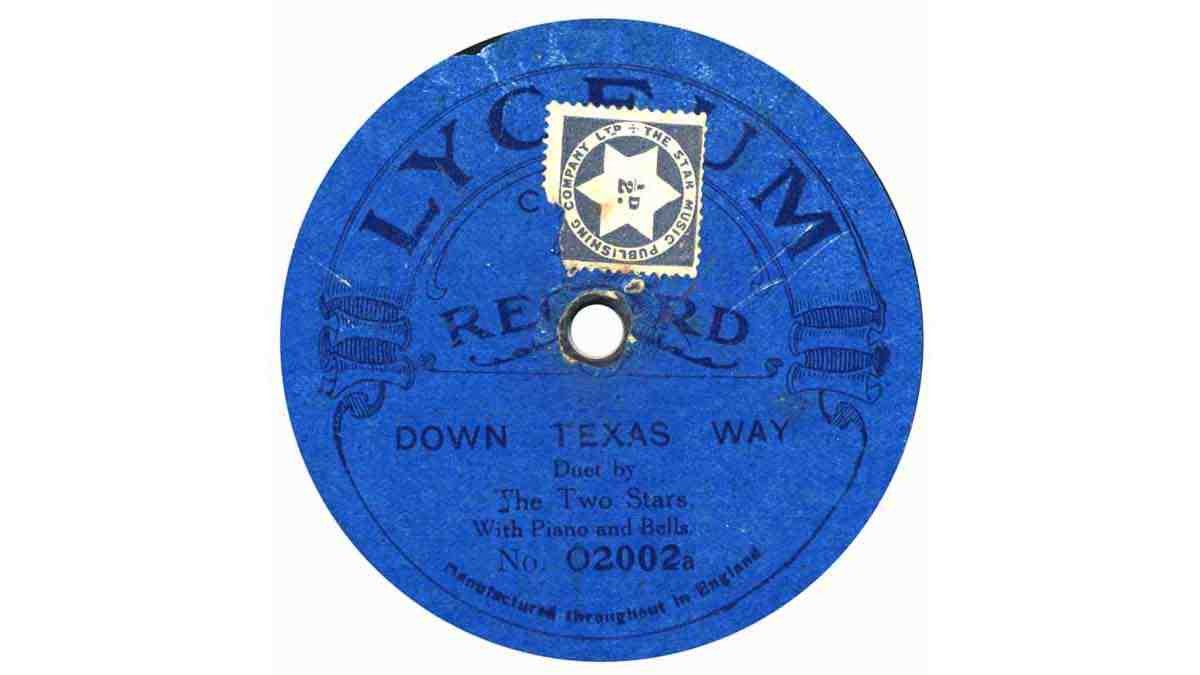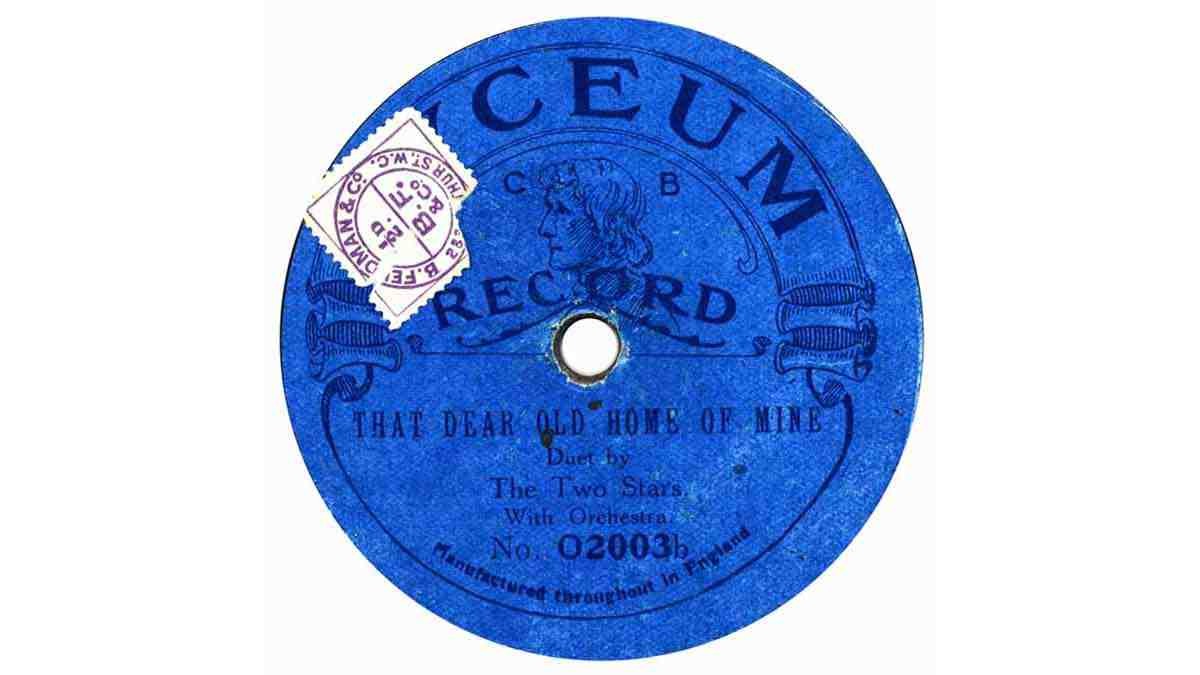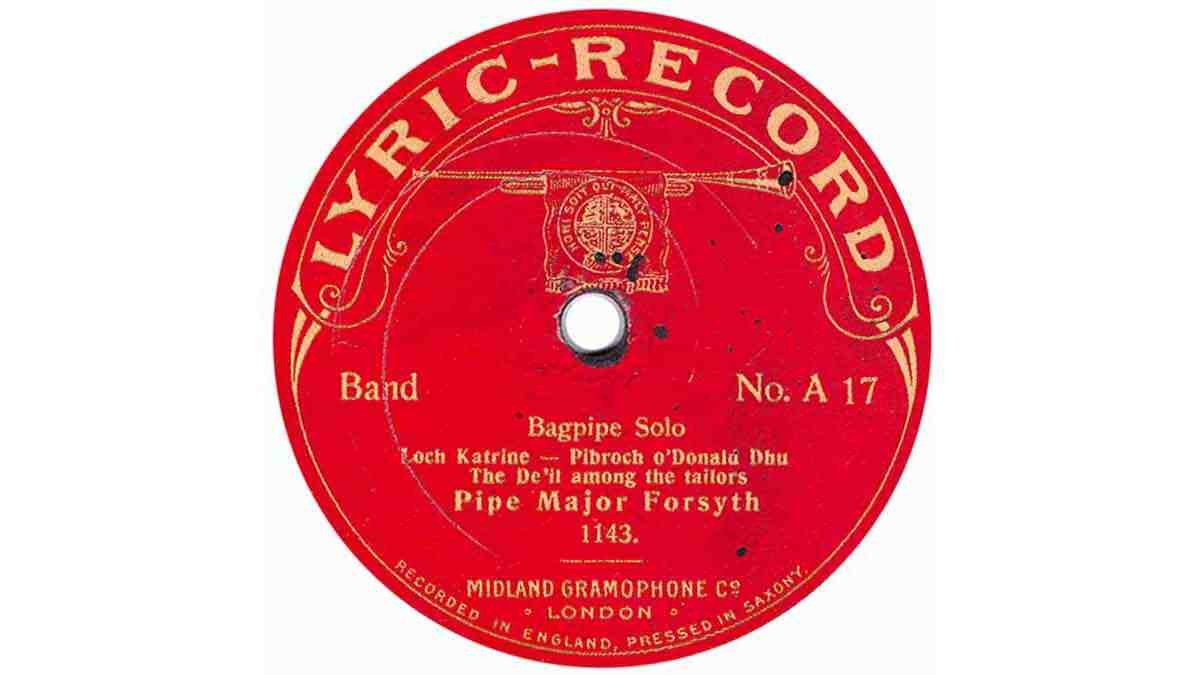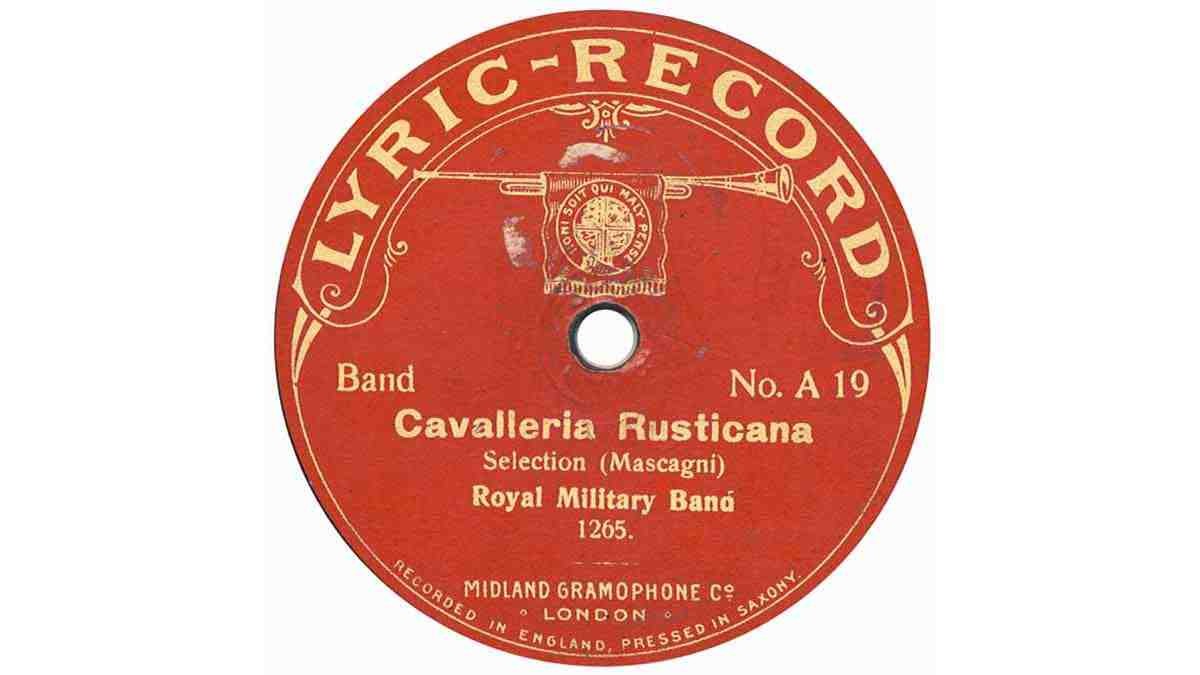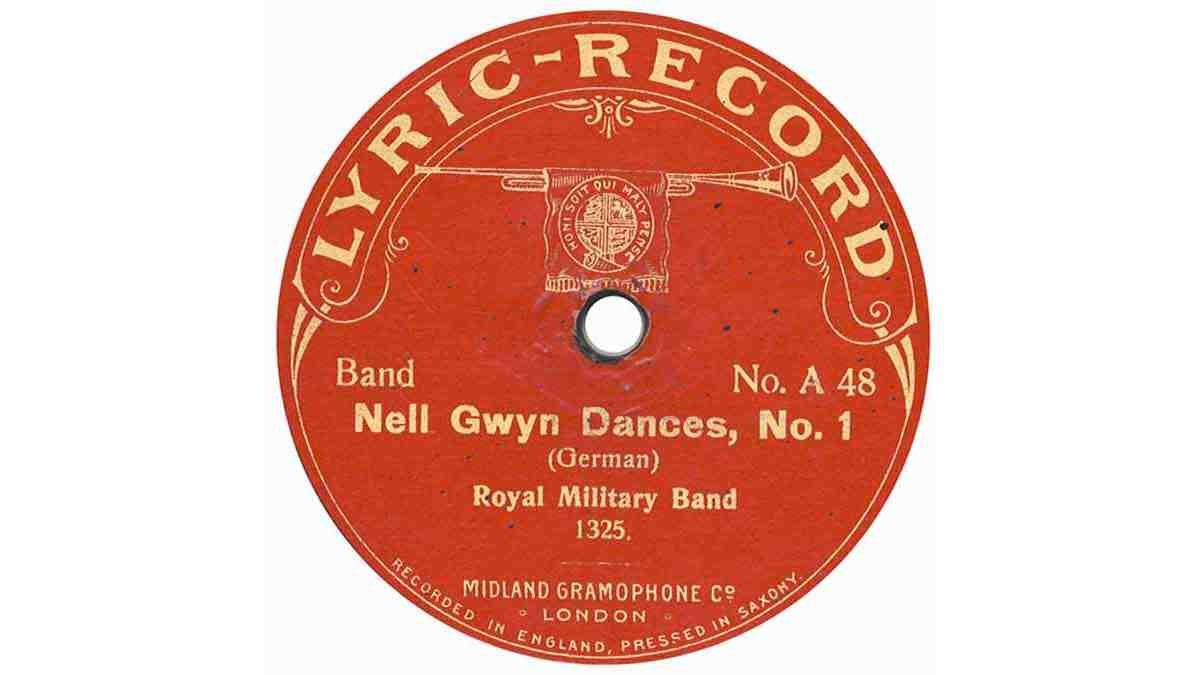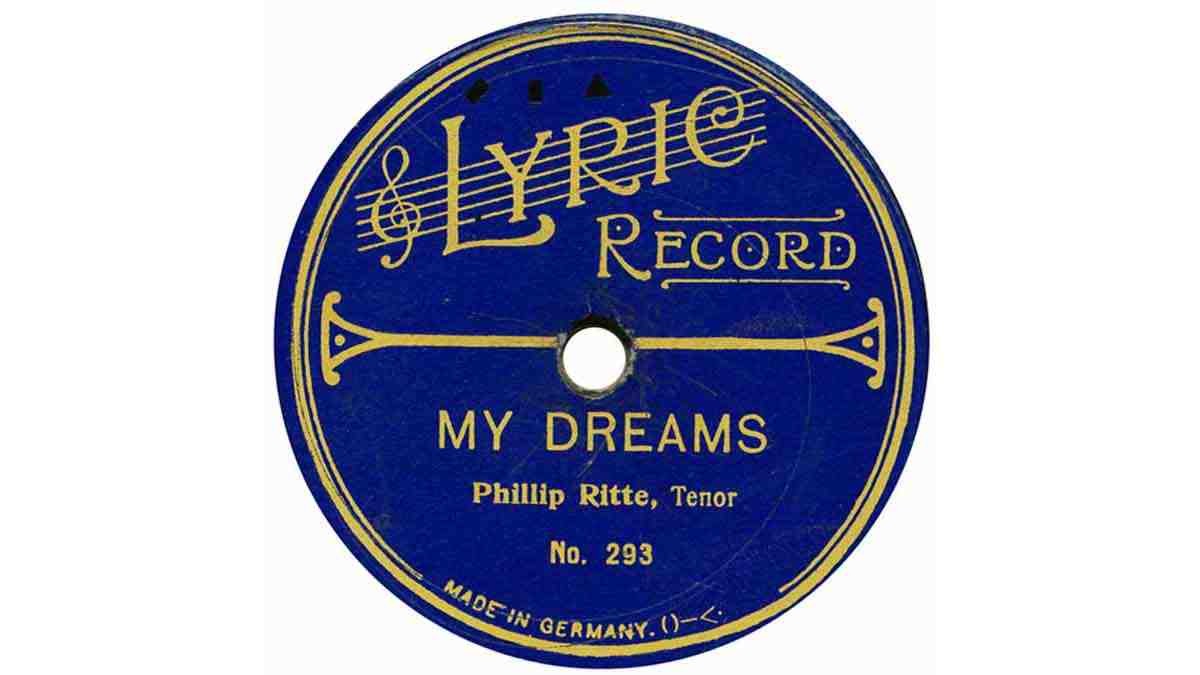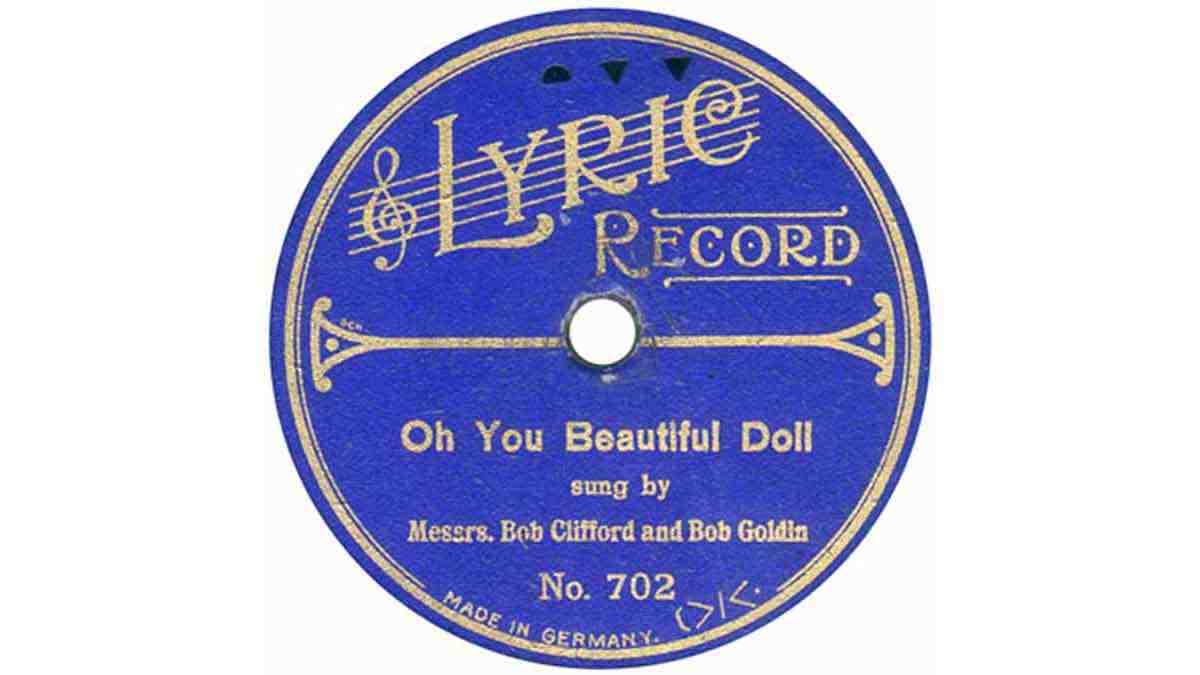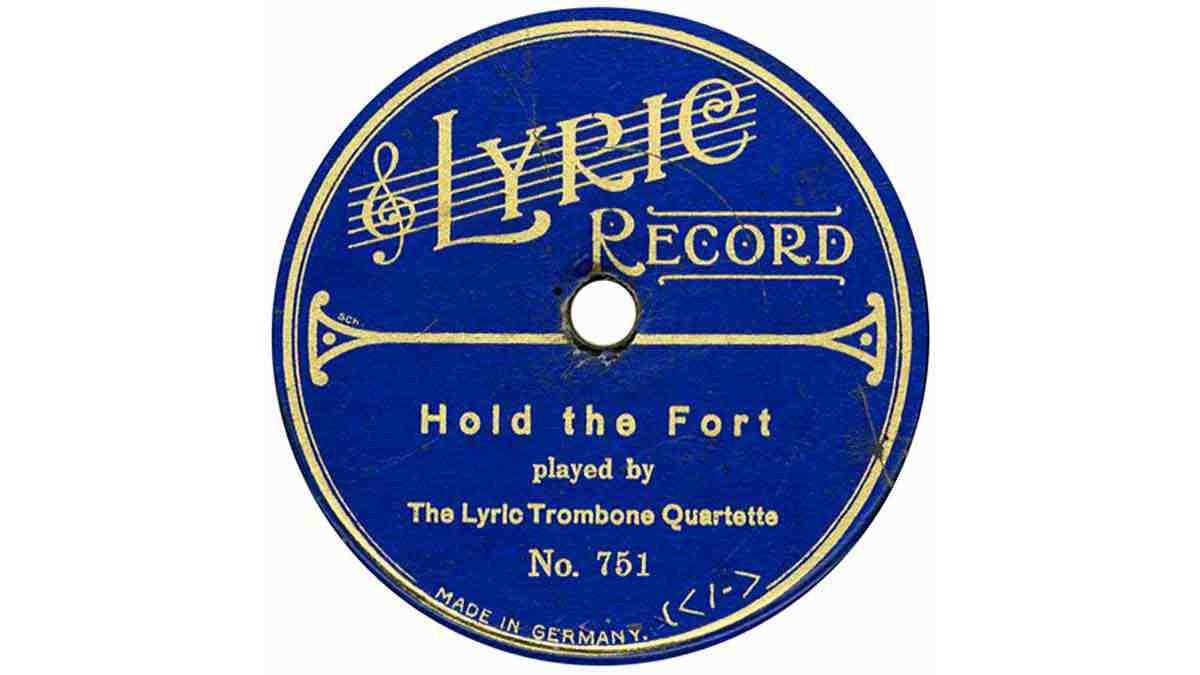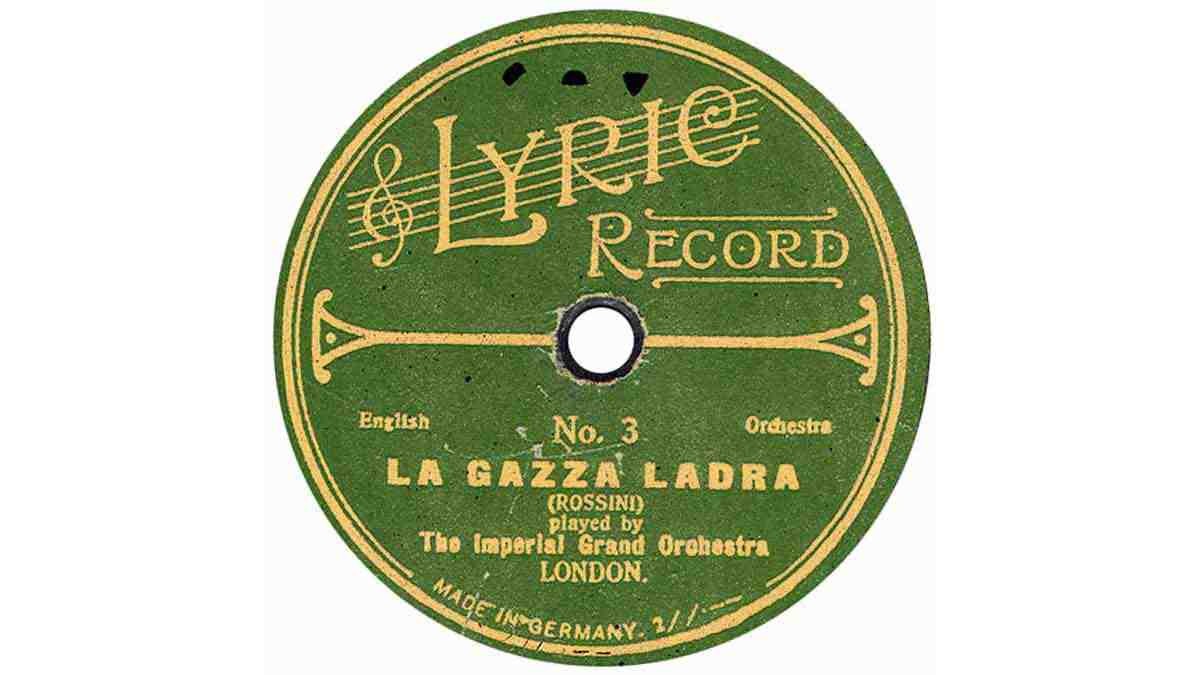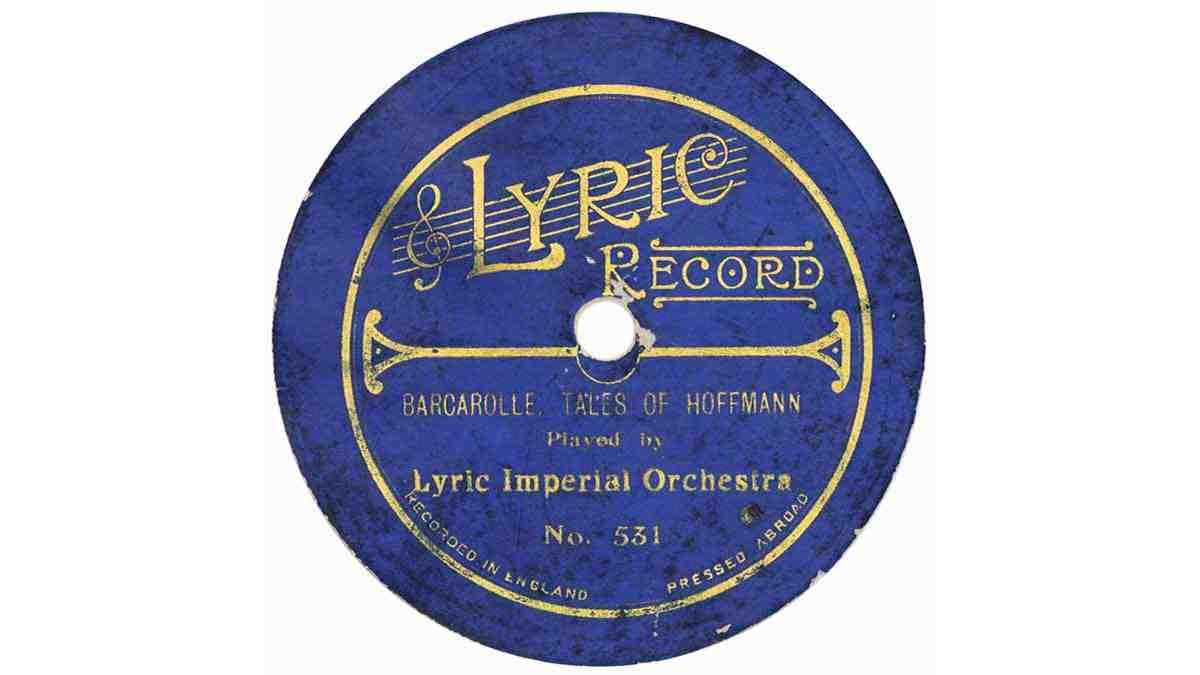
Early British record labels 1898-1926: L
Lansbury's Labour Weekly | The Leader | Leon Leibowich & Co. | Levaphone | Lilliput | Linguaphone | Little Briton | The Little Champion | Little Gem | Little Marvel | Little Popular | Little Tots Nursery Tunes | Lloyd | Ludgate | Lyceum | Lyon's Corrner House | Lyric - 1 | Lyric - 1 | Lyric 3 | Lyricphone | Lyrophon
Lansbury's Labour Weekly
See Frank Andrews: FTR 15, 2005. Frank credits David Mason for providing most of the info. on this scarce label. George Lansbury (1859-1940) was a Labour Member of Parliament very early on, in 1910. He founded his eponymous magazine in 1925. It lasted for about two and a half years, when it merged with the Labour Party’s official publication, the New Leader. Having published socialist songs and music in his paper, he progressed to making records, but encountered much opposition. Most record companies refused to record the songs, which they regarded as inflammatory. However, David Sternberg, of the British Homophone Co. Ltd., allowed the use of his then-obsolete acoustic equipment. Then, there arose the difficulty of having them pressed; Homophone’s discs were pressed (as well as recorded) at this time by ‘mighty HMV’, who would have nothing to do with Socialist songs, as was only to be expected! Eventually, the Pathé concern pressed them – but insisted they carry plain white labels, so as not to engender argument among their workers. The labels, perforce, had to be stuck on by hand. On ‘The Red Flag’, which is quite a long record, the sticking on has not been done very well; but on ‘God Save The People’ it is much neater, and the edge of the underlying white label shows around the edge. On ‘The Red Flag’ & ‘International’, Rufus John was a pseudonym for baritone John Goss, who was an HMV artiste, so that company was indirectly involved after all! The other disc above is sung by a tenor, name presently unknown. There were only six issues altogether, made between July 1926 and March 1927, and all were acoustic.
The Leader
See Frank Andrews: FTR 15, 2005. A very elusive label, which even Frank declines to date precisely. He feels that it might have been a ‘tallyman’ label (see e.g. John Bull and Meloto) and in view of the scarcity of them, one which may have failed during the price wars of 1913, which drove the price of cheap records down to just 1/- (5p). They were never advertised in the Trade Journals. Or, they may have been made for one particular dealer or client, as yet unknown. (However, in BRI Frank notes that Mead & Co. of Liverpool were selling phonographs and cylinders called ‘The Leader’ in 1903 and subsequently for some time. It is possible that The Leader disc records were also made for Mead & Co.) Frank is confident, however, that they were manufactured, in this country, by the Disc Record Company. This concern had accumulated, in various ways, a large number of masters from a variety of sources. These they used to press discs at the cheaper end of the market. Their stock-in-trade included stuff from Beka, Bel Canto, Dacapo, Favorite, Nicole, and U.S. masters from the defunct Star Records and the American Record Company, as witness Collins & Harlan on 640. ‘The Leader’ remains very much a label of mystery; and though its inception is unknown, it cannot have carried on much after late 1914, as the Disc Record Co. went to the wall in early 1915. The significance of the ‘Special’ label on the right is not yet known.
Leon Leibowich & Co.
See Frank Andrews, FTR 15, 2005. The London wholesaler Leon Leibowich & Co., offered, in 1909, postcards and playing cards that were also gramophone records. These were thus the first in very long line of talking or musical cards – different forms of them appeared for many decades. See Dr. Rainer Lotz’s extensive & fascinating article on such recordings. On the basis that neither Frank nor Dr. Lotz know their origin, we may be certain that they are very scarce indeed. Leibowich also had bankrupt stock of Edison Bell ‘Bell Discs’, and some other, un-named label in late 1909 and early 1910. He must have done all right with these, as he soon had his own labels made, such as Besttone, Pickofall, Playwell & Fortune.
Levaphone
See Frank Andrews, FTR 15, 2005. The proprietor, Jack Levy, first sold cylinder records around 1900-1901 from a stall in an open market in London. Later, he opened a long-lived shop in Whitechapel which he eventually called ‘The Home of Music’. He had Olympic records made for him, starting about 1913. These seem to have continued for 12 or 14 years. Another slogan was ‘Foreign Records a Speciality’: if you knew of a record’s existence, Levy’s could probably import it for you. The shop became a Mecca among the earliest jazz record collectors. (This woefully under-researched period began around 1925.) Sensing a niche market, Levy’s created Levaphone in late 1925 or early 1926, and had ‘hot’ sides issued thereon, drawn from U.S. Vocalion. True, there was only one issue of 3 discs, but this represented a remarkable development in the British retail record trade. In 1927, further Levaphones appeared in an L- series. There are about 15 of them, all by Ukulele Ike (Cliff Edwards), from U.S. Pathés dating from two or three years earlier. As they were mechanical recordings, they qualify for inclusion here. Later, Levy’s Oriole discs appeared (again with Hot Music), but those were electrically recorded. Subsequently, Levy’s had two private recording studios in central London. Eventually, they built a pressing plant and Oriole became a ‘major minor’ label and the plant was a prolific source of custom pressings . A fascinating story, but far beyond our time period.
Lilliput
See Frank Andrews, FTR 15, 2005. Frank informs us that Lilliput Records were 5″ (12.75 cm) double sided records. A product of Homophon, they were first advertised in the British trade press in September 1905. Like the 10″ Homophons (single and double sided) that were also introduced at the same time, they had to be ordered direct from the maker in Berlin. Frank believes that about 75 Lilliputs may have come out here. By December 1906, a British agent had been appointed: Bernhard Andrés & Co. I have never seen a Lilliput; they cannot be common. Their companion single sided Homophones are very scarce too: the sales of both these must have been fairly modest.
Linguaphone
It is believed that discs may have been pressed for the Linguaphone Institute by the Disc Record Company. If so, these must date – at the outside – between 1907 and 1914. However no example is known to us, as at 26th June 2018.
Little Briton
See Arthur Badrock, TMR 93, 1996. A ‘mini-disc’ label produced by ‘Edison Bell’, for an unknown client. The above example is 5 and five-sixteenths of an inch in diameter (13.3 cm). The other side is ‘Shine’, the Ford Dabney title that was current in the U.K. in 1924.
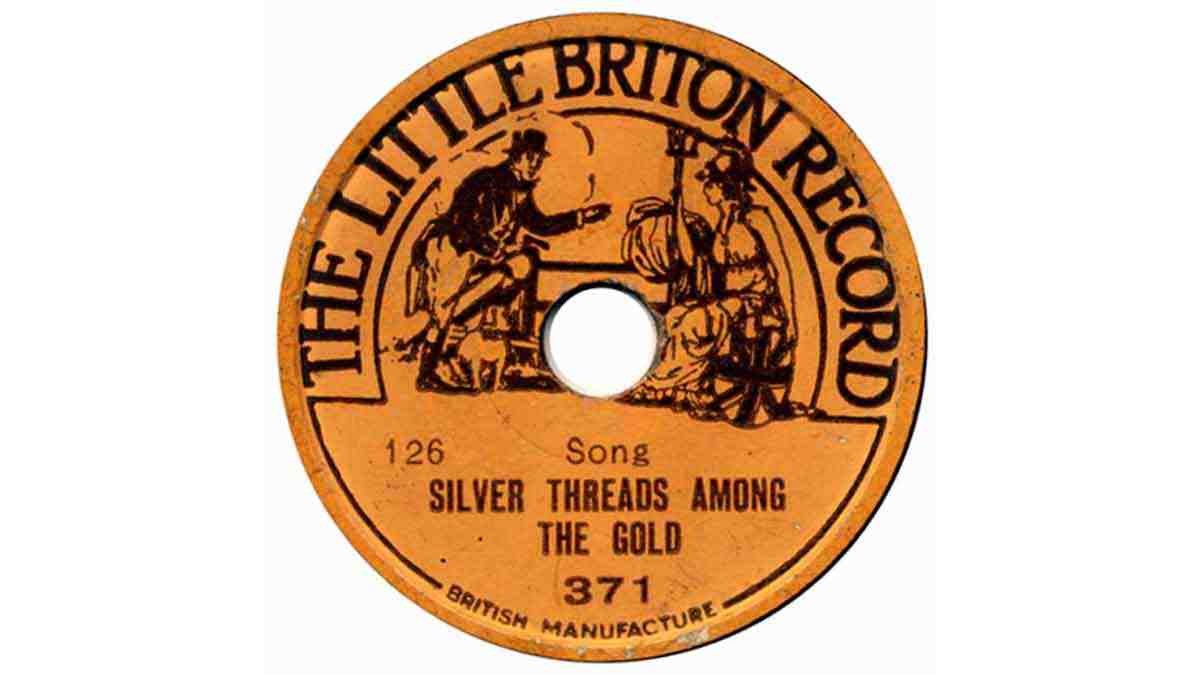
The Little Champion
The C.L.P.G.S. Reference Series booklet No.41 carries a detailed written history of Edison Bell, by Frank Andrews and Bill Dean-Myatt. It contains a CD-ROM having nearly 17,000 Edison Bell masters (Bell Disc, Electron, Radio &c as well as Winner) listed in an MS Excel file, fully searchable & sortable.
These scarce discs were made by the concern loosely termed Edison Bell. Bearing in mind that it was a very old one, having made cylinder records as long ago as ca. 1890, it was ‘married’ as it were, to the old vertical cut method of recording, as originally used on phonograph cylinder records. Although they boldly began to make lateral cut discs in 1908 (Bell Disc), they evidently retained an affinity for the old system. Therefore they were to introduce two vertically cut discs. The first appeared in 1908 – the short-lived Phona-Disc. Those sixty-odd issues disappeared almost instantly and virtually without trace. Either slow to learn, or perhaps because in 1910 there were, to be fair, many gramophones around which were intended to play vertically cut discs (Pathé, Neophone, Musogram &c.) they brought out ‘The Little Champion’ record, at the slightly odd price of 1/4d. There were only 53 issues, which were terminated in 1911. Little Champions are less rare than Phona-Disc, at least in my opinion. I have had three in 55 years, vs. no Phona-Discs at all. At any rate, Edison Bell finally (and perhaps with some relief?) shrugged off the vertical cut format for the rest of its existence. Some of 3049 can be heard on YouTube. One curiosity is that 3010 bears copyright stamps These first appeared in 1912, so some sales must have occurred until then? The rough pencil marking on its packet might be the number nine. If so, it would probably mean the discs were being sold off cheaply at ninepence.
Little Gem
Kindly sent by Adam Miller of New Zealand. These 6″ (15.25cm) discs were made by Vocalion for an unknown client. The masters used seem to have been the same as Woolworth’s ‘Little Marvel’. The date is mid 1920s, and there were, later, electrically recorded Little Gems. The label says so, and this is further attested by the letter M in a circle – the sign of the Marconi Company’s electric process, as used by Vocalion.
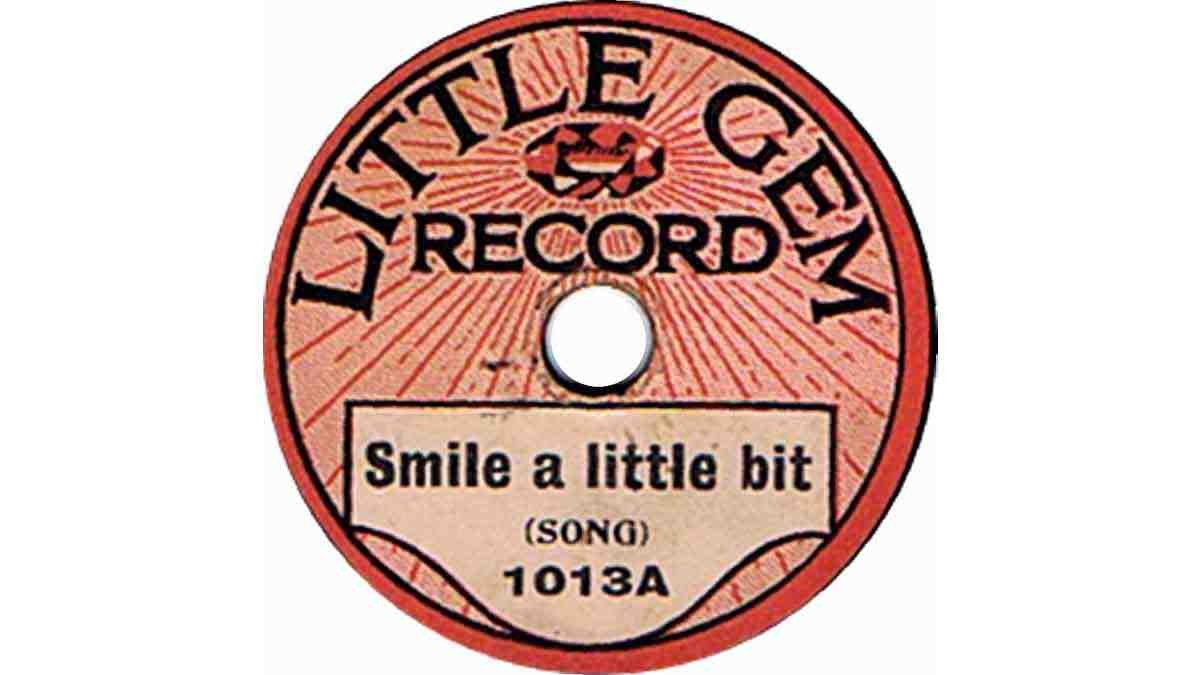
Little Marvel
See Arthur Badrock: TMR 95, 96, 1996-97. A provisional listing appears in these two issues. Arthur states that recordings were first made in 1922, but some were not issued until later, but still fall in our period of interest. The earliest Little Marvels were 5.375″ diameter (13.5 cm) diameter, and were made by ‘Vocalion’ for Woolworths stores, where they were sold for 6d (2.5p) each. 6.5″ discs appeared later. They sold well and still turn up. They have no artiste credit: just the title and the type of material – e.g. ‘Song’, ‘Band’ &c. From the first they inevitably employed the system common to very cheap labels, of having a copyright work only on one side. The minimum royalty was one half-penny per side. If both sides carried a royalty, that was one penny (1d) per disc. But on a disc selling for sixpence (6d = 2.5p) then a royalty of one penny represented one sixth of the retail price, or 16.6%. Yet the Copyright Act only demanded a royalty of 5%! There was no choice then: there had to be some new copyright stuff: but all were backed by non-copyright material, as in the case above. Even then, this Little Marvel was paying a royalty of ½d on sixpence on its other side – or 8.3%, as opposed to the more lenient 5% rate for more expensive discs. Moreover, the copyright stamp covered the ‘W’ signifying Woolworths.
Little Popular
A product of the Sound Recording Company, whose label at the time was ‘Popular’. They were introduced in January 1922, and were 5.5″ (14 cm) diameter, and double sided. The same company had been making single sided Mimosa records of the same size since 1921. Those were exclusive to Woolworth’s stores; so perhaps the Little POPular was brought out to enable other retailers to offer these small discs? (We have left the B&W image here, which was the first one we had, and thank Mike Thomas for sending an example in the proper colours.)
Little Tots Nursery Tunes
See Frank Andrews, FRT 17, pp16-17. A product of the Plaza Music Company of New York, U.S.A., whose main record label was Regal (no connection with the British label of that name). They appeared in 1923 and were subsequently imported here in October of that year by the factor Barnett Samuel, proprietors of Decca gramophones among other things. 7″ (18cm) in diameter, they came in albums containing three – later four – discs, plus coloured picture cards, with the story, or words of the song, printed on the back. The three-disc books originally cost 4/- (20p), which was 5p for each disc & 5p for the book or album. They were still available in late 1926. Nine books were issued in all, the discs being numbered in a 100 series.
Lloyd
See Frank Andrews, FTR 17. An extremely obscure label. Even Frank has only ever seen one. It was 12″ (30 cm) diameter, and had bilingual titling in German and English – hence the intention to sell them here? The label bore an ornament or device similar that found on most Pelican records, and also Globos records, and had two items from the operetta ‘Eva’. A trade mark ‘Lloyd Rekord’ was registered in Germany in May 1911, but that was for a sticker to be put on other labels. However, Dr. Rainer Lotz kindly sent the German example above, which is also bilingual and has items from ‘Eva’ – evidently the source for our very scarce British Lloyd.
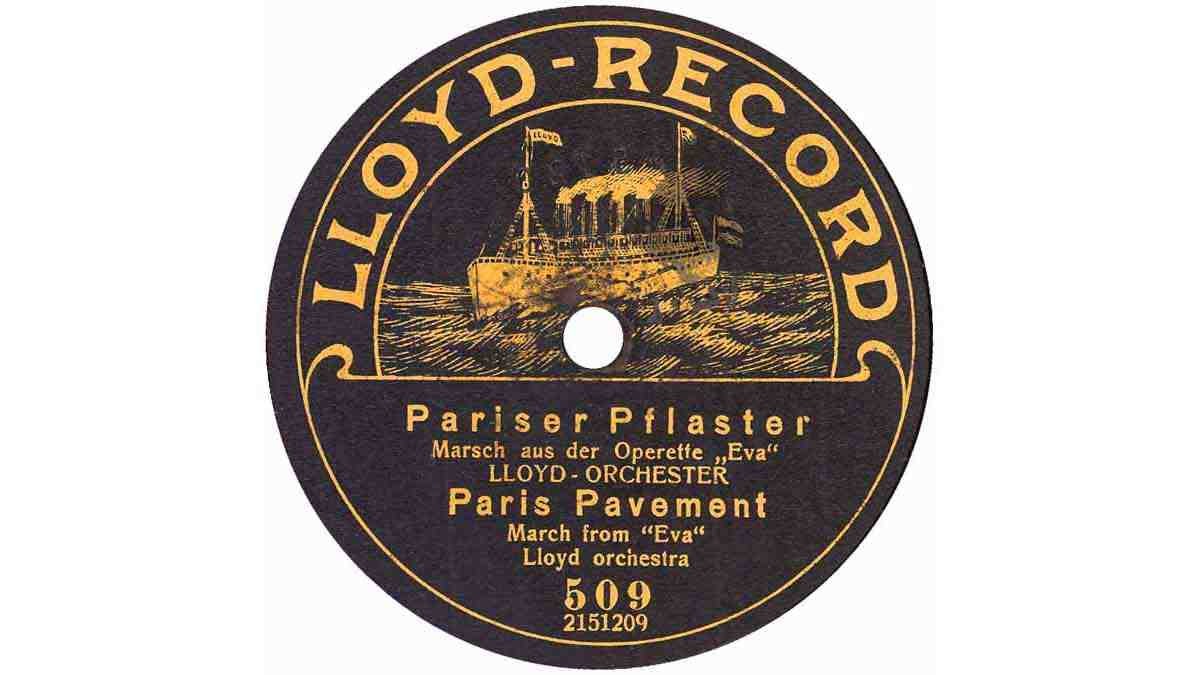
Ludgate
See FA, HD 181, 1991. Ludgate records belonged to Messrs. Dollond (makers of scientific instruments and ‘Experimental Electrical Apparatus’). They were evidently branching out, commendable for a concern that dated back to 1750! Their head office was in Ludgate Hill, London. There is an advert. for them in 1924; Frank informs us that there are two sources. Some Ludgates (probably a minority) were pressed by Crystalate using Grammavox and Popular masters, dating back to 1912. Of course, in the absence of electrical recording that didn’t matter – most Grammavox masters were well recorded. However, most Ludgates were pressed by the Universal Music Co. (often loosely called Vocalion) at their Hayes factory, as were many other marques: e.g. Scala, Coliseum, Guardsman, Homochord &c. On 6087, the side shown is a British recording of November 1923; but the other side is by Rudy Wiedoeft’s Saxophone Sextet, drawn from U.S. Vocalion. 4740 is a British recording, originally issued on Aco F-33029 and credited to Francis de Bourguignon. 5203 is a resurrection of one side of Guardsman 521 of ca. 1915, when it was credited to the Mozart Symphony Orchestra. The label is pretty elusive. There were also Ludgate gramophones. Frank thinks their involvement in the music trade was relinquished in 1927, when the firm Dollond & Aitchison was formed, which still flourishes today.
Lyceum
See Frank Andrews: FTR 18, 2006. Frank tells us that there were two distinct incarnations of Lyceum. The ‘C B’ on the label stands for the wholesaler Cooper Brothers. Since 1912, CB’s only label had been Coliseum, but they must have felt another was needed, as the price war was raging in late 1913, and cheaper and cheaper discs were required. An initial batch of 87 discs, made in Germany by Beka, appeared first, by November 1913, in time for the Christmas trade. The colour of O-68 is an unusual variant – its other side is normal. However, the series did attain O-200 – but by this time War had broken out, and O-152 above is ‘manufactured throughout in England’. This type would have been pressed at the Lindström works in Hertford. Frank informs us that the (newly re-founded) Wm. Cooper Bros. Ltd. concern stopped promoting Lyceum records from November 1917. There was, however, a second incarnation of Lyceum a year or two later in an O-2000 series. Frank knows only of four examples, O2009 being the highest. These last issues, derived from the Sound Recording Co., ‘Popular’ masters and pressed by Crystalate, probably date from 1918-20 and are very scarce indeed. As you can see, they are printed on a much darker blue paper, and since the type is in dark blue as well, the labels are not terribly legible! In Lyceum we have a classic example of an always elusive label, yet which was produced in three different factories, with three quite different sources of repertoire none of which was actually original to Lyceum. Were it not for Frank Andrews’ indefatigable research, we would know very little of all this.
Lyon's Corrner House
In May 1923, The Georgians, a ‘hot’ unit of Paul Specht’s band from the U.S.A. played for some time at the newly-opened Lyons Corner House Café or restaurant in central London. The young Belgian jazz fan Robert Goffin heard them there, and wrote – much later – that the band was excellent, but only played very short sets – perhaps two or three numbers on the hour. Be that as it may, a single-sided souvenir record was produced by Columbia for Lyons. It is not known whether these were sold, or perhaps simply given away. ‘All Muddled Up’ was not a new recording – it was a U.S. side made by Specht’s full band in October 1922, already issued on British Columbia 3234. Still, it would be a jolly nice thing to have! By way of consolation, Specht’s great pianist Arthur Schutt did make four piano solos for Regal while he was here. But even they are rather hard to find.
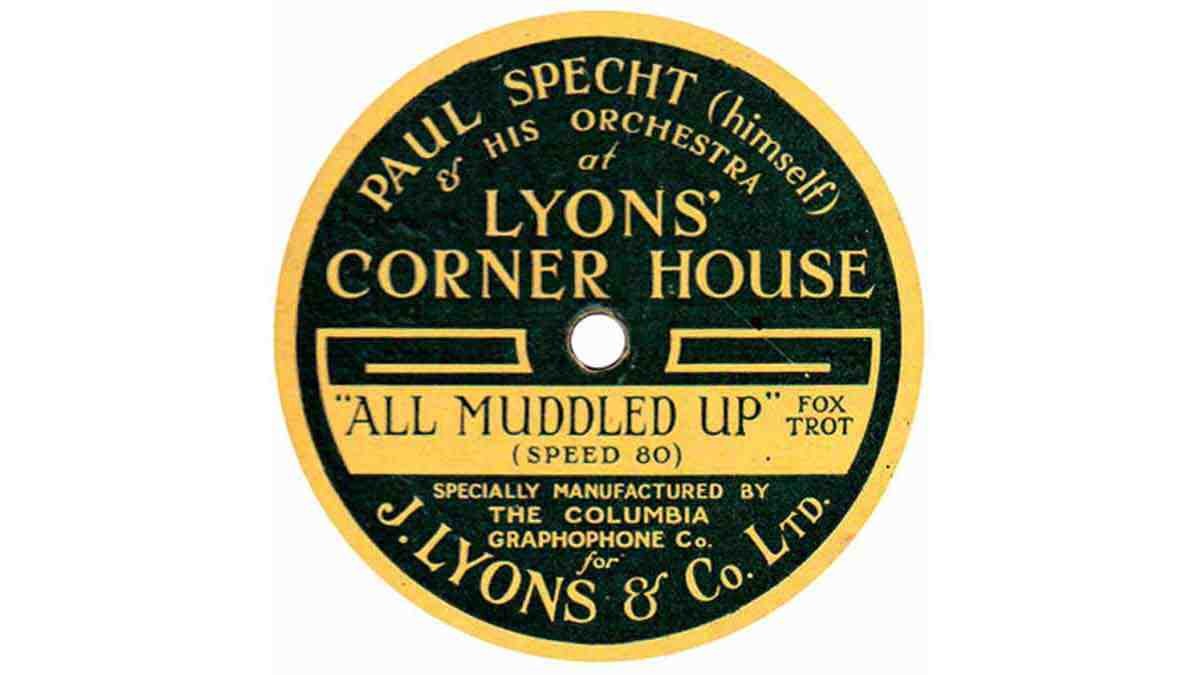
Lyric - 1.
See Frank Andrews, FTR 18, 2006. These were first advertised in October 1912. The proprietors were the Midland Gramophone & Record Co., of Birmingham, later of London. Frank tells us they were derived from Joseph L Blum’s masters when he was trading as Kalliope. These red Lyrics can only have had a very short life-span, perhaps just a few weeks; hence their scarcity. ‘Lyric’ was in fact a trade mark already owned by the Columbia concern, so it may be that they had this label suppressed on threat of legal action – pure conjecture on my part. But see below.
Lyric - 2.
See Frank Andrews: FTR 18, 2006. The ‘usual’ sort of Lyric is that shown above. They were advertised in November 1912, just one month after the red Lyric-1 above. The factor was The Premier Gramophone Stores, Stratford, London E. These were made by Favorite, as readily attested by the punched-out holes in the labels; their purpose remains unknown, though it is always the same on both sides. The Favorite face number appears to the right of the ‘Made In Germany’ legend at the foot of the label, in the form of a ‘punctuation code’. As remarked above, ‘Lyric’ for use in connections with talking machines was a Columbia property, and in 1913 Columbia were successful in preventing the use of the word ‘Lyric’ in relation to a record &c., so the label presumably disappeared after perhaps a few months. Surprisingly for such a transitory label, they are found more often than one would expect. Just arrived (February 2013) is a scarce variant: a label only, removed from its disc. On the back of it is written: ‘Pasted over Scala 49’. Many thanks to the unknown researcher who provided this label and its annotation! Scala labels were normally 85 mm diameter, while Favorite labels were only 75 mm by the time of Lyric. Hence a large border was necessary to cover the Scala label.
Lyric 3
See Frank Andrews, FTR 18, 2006. Just to add to the general festivities, a third form of Lyric record appeared, pressed by Polyphon, and bearing a pale blue label. Its date is unknown but must clearly be before August 1914. The proprietor is unknown.
Lyricphone
Since Frank Andrews covered the labels Lurox to Lyrophone in his excellent series of articles in FTR 18, 2006 without mentioning Lyricphone, we may legitimately conclude that this label must be exceptionally rare. Happily, the copyright stamp can give us a date range. Adam Miller’s stupendous 200 page book ‘Stamps On Music’ (Scratchy Publications, Wellington, New Zealand, 2007), which details & illustrates thousands of these copyright stamps, beautifully reproduced, informs us that the Francis, Day & Hunter stamps that bore their values coded by letters (as here: ‘A’) were only in use in 1914-1915. We may therefore sum up: Lyricphone was a label of unknown source and distribution, but manufactured in the U.K. around 1914-1915. Additionally, the patriotic nature of the material on Lyricphone L-505 would indicate a date soon after the outbreak of the Great War 1914-1918. Conjecturally, Lyricphones might have been pressed by the Disc Record Company; master 2672 had this title, also appearing on the DRC-produced Besttone 381, another very obscure issue of the time.
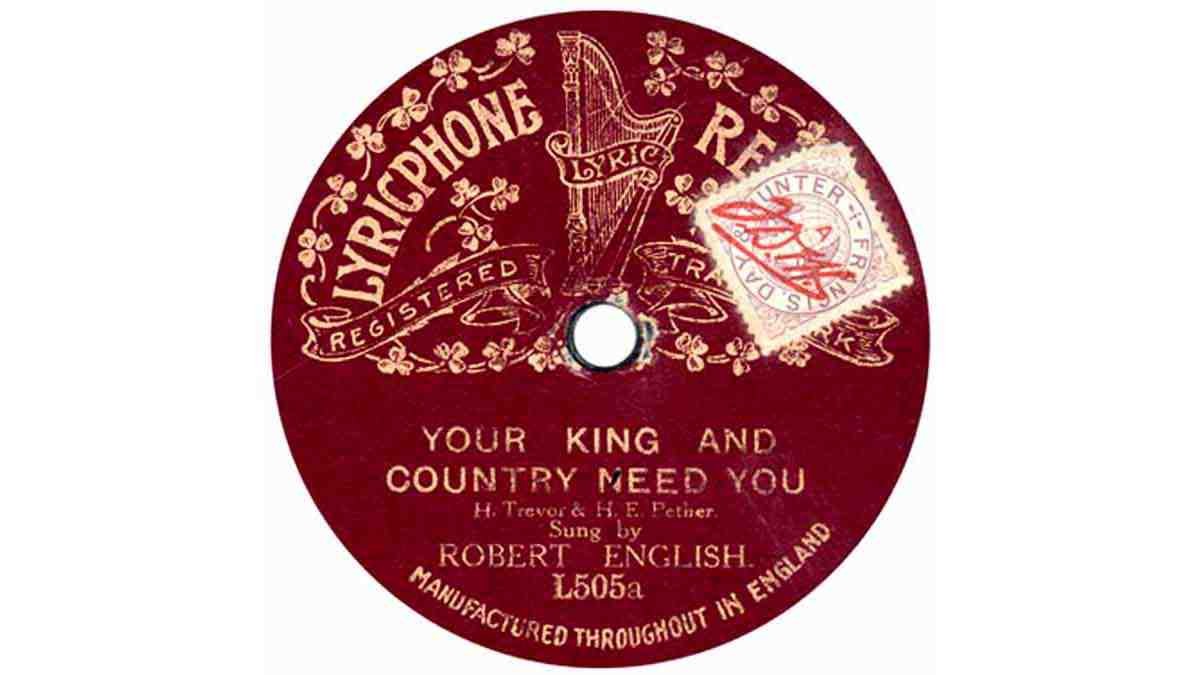
Lyrophon
See Frank Andrews, FTR 18, 2006. For a label of such obscurity in the U.K., Frank has written a fascinating article about the word ‘Lyrophon’ and the ramifications of its use. Briefly, the name dates back to 1899, when it was registered in Germany to cover phonographs & cylinder records. About March 1904, single sided Lyrophon discs appeared. By 1906 there was a catalogue of three thousand items! Fr. Rauth (a German Merchants Agent) had been appointed sole British agent by April 1907, and proceeded to announce the impending arrival here of Lyrophon products – for there were also Lyrophon gramophones. A London recording room was to be set up. Eight Lyrophon discs were reviewed in the trade press in May 1907. Various dealers and factors were soon offering 10″ and 12″ Lyrophon discs, besides gramophones and sound-boxes, through to 1910. One of them was our old friend W A Barraud (of Dacapo, Invicta & Guardsman fame), who in that year announced that he was now sole agent for all Lyrophon products. Besides this activity in the U.K., Lyrophon had been busy recording ‘ethnic’ records, and the German head office reported in 1913 that discs could now be had in Aramaic, Bengali, Burmese languages, various dialects of Chinese, English, Hindi, Javanese, Malay, Singalese, Siamese, Sudanese and Tamil. Even so, in Germany, in September 1913 it was announced that by a relatively complex process, Lyrophon was to be amalgamated with Greenbaum & Thomas (another disc manufacturer), then, together with Dacapo Records & Favorite Records, all would become part of Carl Lindström A.G. of Berlin. In October 1913 and January 1914, various new Lyraphon issues were announced, including English repertoire. As Frank concludes: “Six months later war broke out … and the war brought an end to all German-made records selling in the U.K.” One is left with the rhetorical question: “Where on earth did all the British Lyraphons go to?” In despair, we illustrate the label of a Polish Lyrophon, in the hope that it might somehow catalyse the appearance of a genuine British one.
